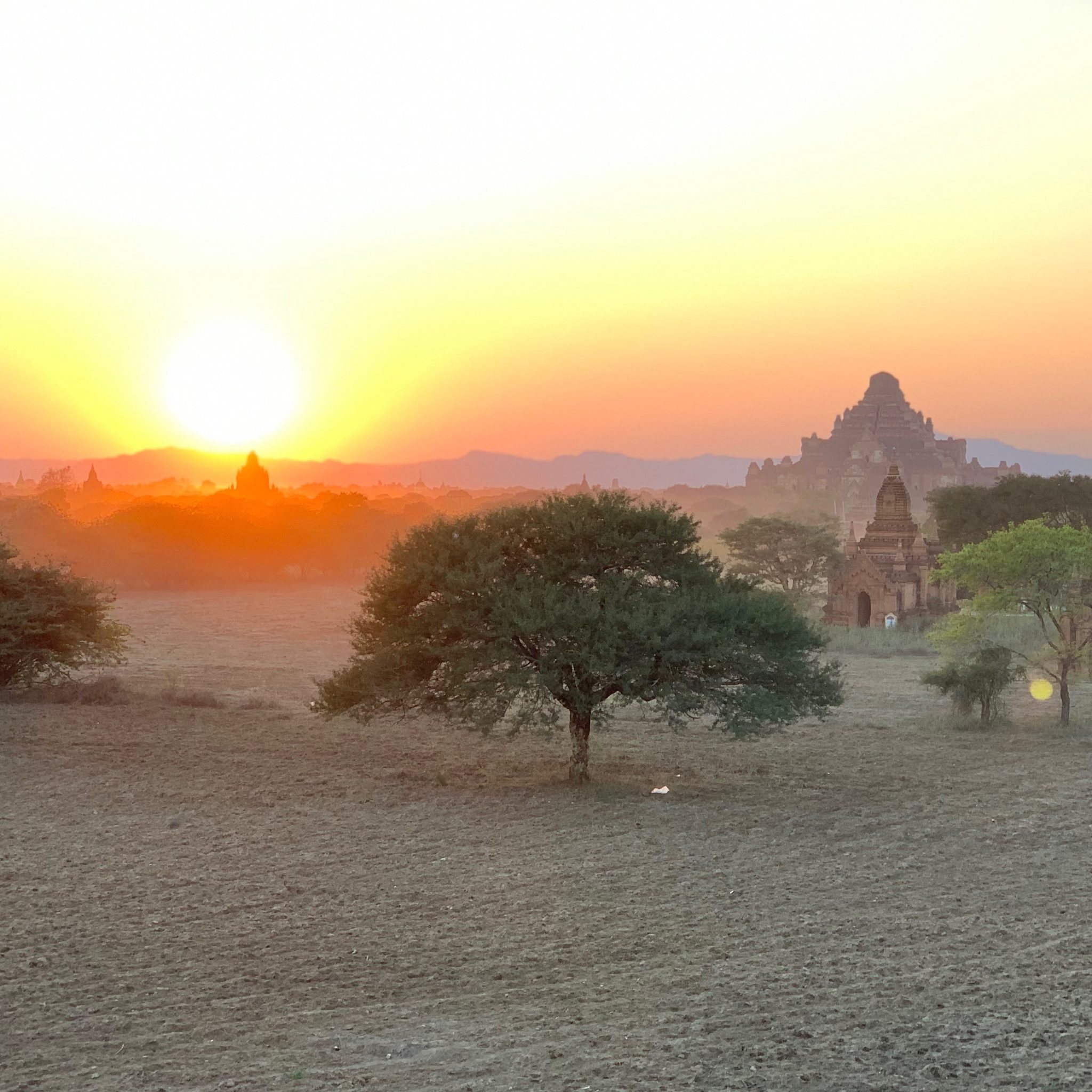Editor’s Note: This post is part of my Myanmar–Thailand trip to Asia. For more on this trip, check out my other posts on Myanmar, Thailand, and Japan.
We had just flown into Bagan (NYU Airport) from Mandalay (MDL Airport), checked-in to our hotel, the Bagan Thiripyitsaya Sanctuary Resort, and now we were ready to head out and explore Bagan, Myanmar.
The only problem? We didn’t have a plan, transportation, or even a map.
48 Hours In Bagan: How To See Bagan In 2 Days [Day 1] (Bagan, Myanmar)
What we did have was the resolve to see everything we possibly could in 2 days, DIY style.
About Bagan
Located on the east bank of the Irrawaddy River, Bagan is an ancient city in Myanmar that served as the capital of the Kingdom of Pagan between the 9th and 13th centuries. Pagan (later known as Bagan) collapsed during the Mongol invasions of 1277 to 1301 AD.
It is said that Bagan, at its peak, was once larger than Paris, France, and had over 10,000 Buddhist pagodas. Today, Bagan is one of the primary tourist destinations in Myanmar, precisely because about 2,200 of the said ancient pagodas still stand in the Bagan Archaeological Zone.
Planning Out Day 1 (And Day 2)
I had read many people choose to explore Bagan on a bicycle or an e-bike because it allows you get off the beaten path to explore the many temples up-close and personal.
I figured an e-bike was just an electric bicycle, as such, the first order of action was to head over to our hotel’s front desk to inquire if they had any “e-bikes”. Turns out they did, and they were rented at a rate of $8 an hour or $15 for the day. We chose the day option and they handed us a map of Bagan (below).
We wasted no time in laying out a plan of attack. The blue square was the location of our hotel. The green line was the general route (we randomly came up with) for “day 1”, the orange line was the general route (we randomly came up with) for “day 2”.
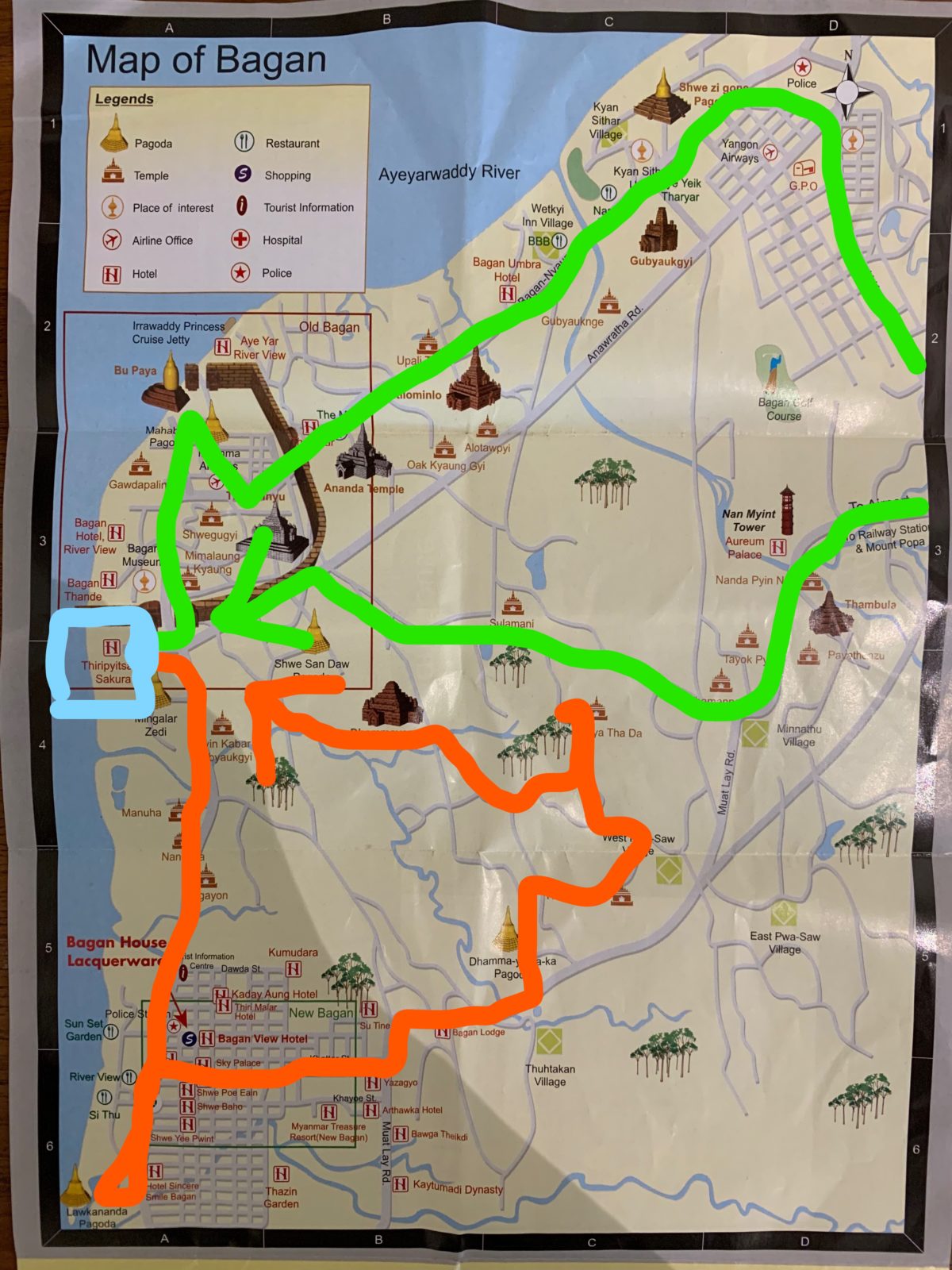
Day 1 = The “Green Route”; Day 2 = The “Orange Route”
Then they brought us the e-bikes. Turns out, they weren’t bicycles at all, but a type of motor-scooter. My friend looked at me and asked if I had ever ridden a motorcycle before. “Never, but I guess I’m gonna learn today”.

Image courtesy of bagandaytours.com
Luckily for us, our hotel (the Bagan Thiripyitsaya Sanctuary Resort) had a large round-about area at the end of a very long low-trafficked driveway – plenty of space for us to take 10 minutes to practice.
Once we were “road ready”, we headed out to explore.
Day 1 – The “Green Route”
Stop 1: Old Bagan
Leaving our hotel, we headed due North, past the old wall, and into Old Bagan.
At first was a little hard to gauge just how big Bagan was, how far apart the pagodas were from each other, and how easy it would be to spot a pagoda that we could identify from our map.
Almost immediately, we ran into the our very first pagoda, Gawdawpalin Phaya (“phaya” is Burmese for “temple” or “pagoda”).
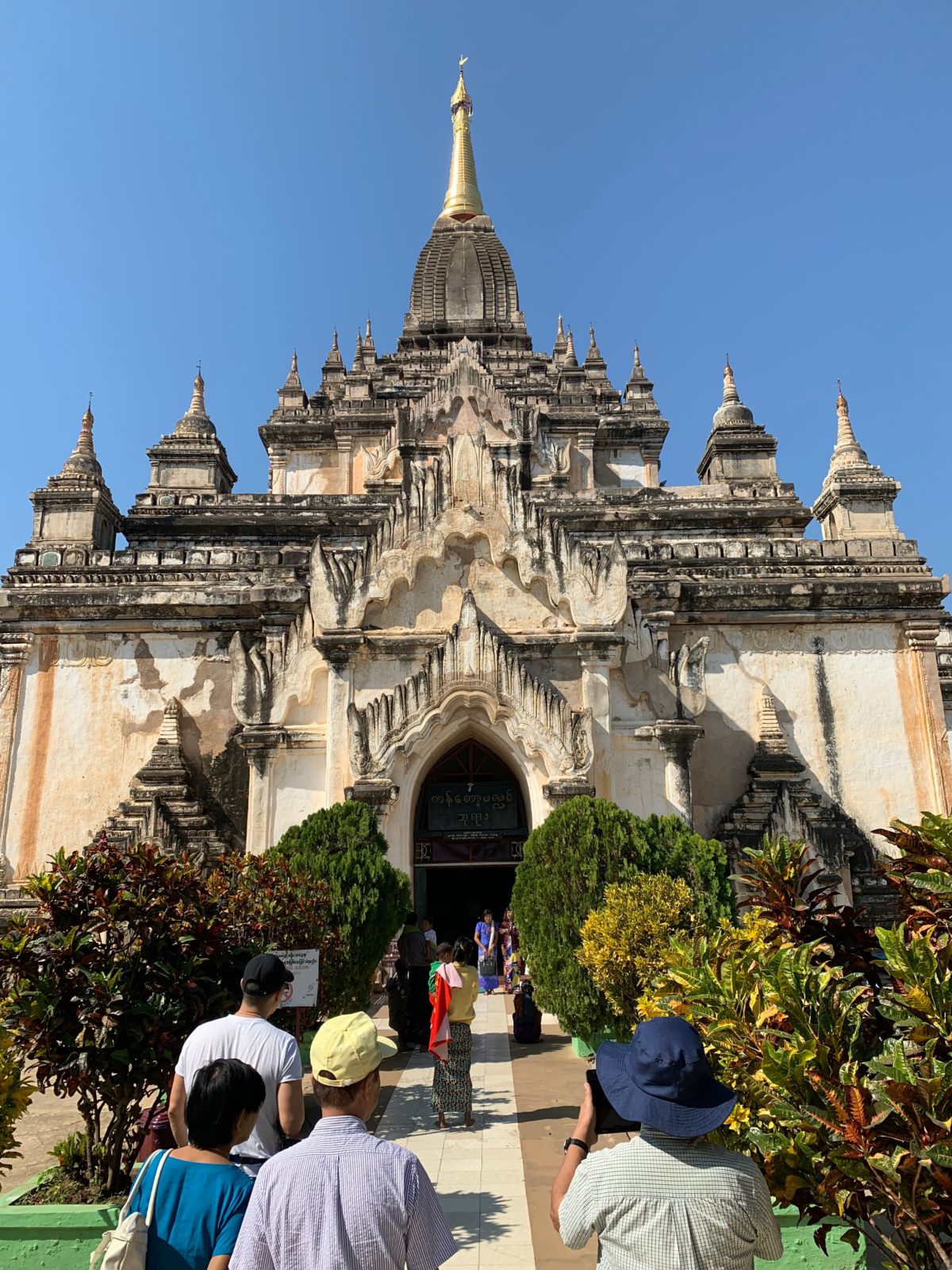
Gawdawpalin Phaya
We continued on through Old Bagan to the Bupaya Pagoda, the gateway to the Irrawaddy.
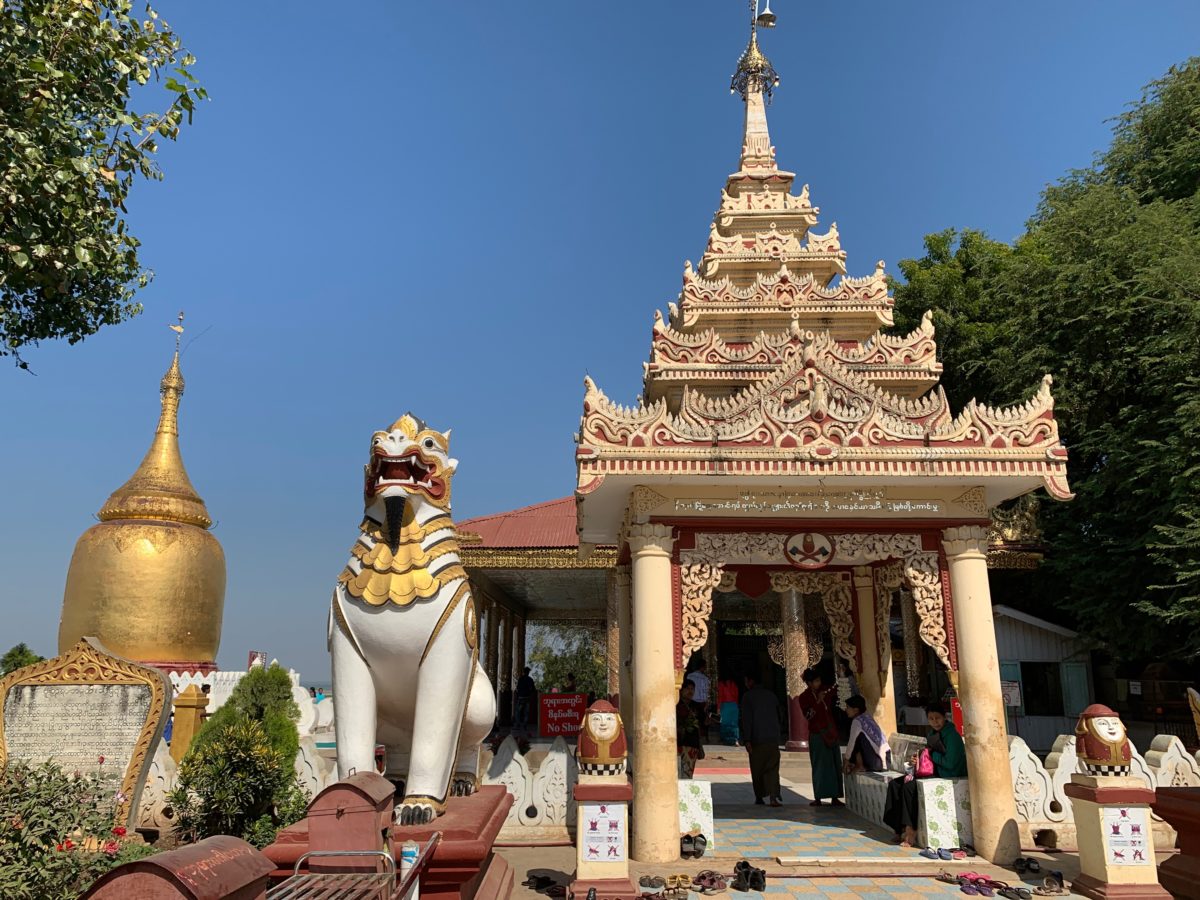
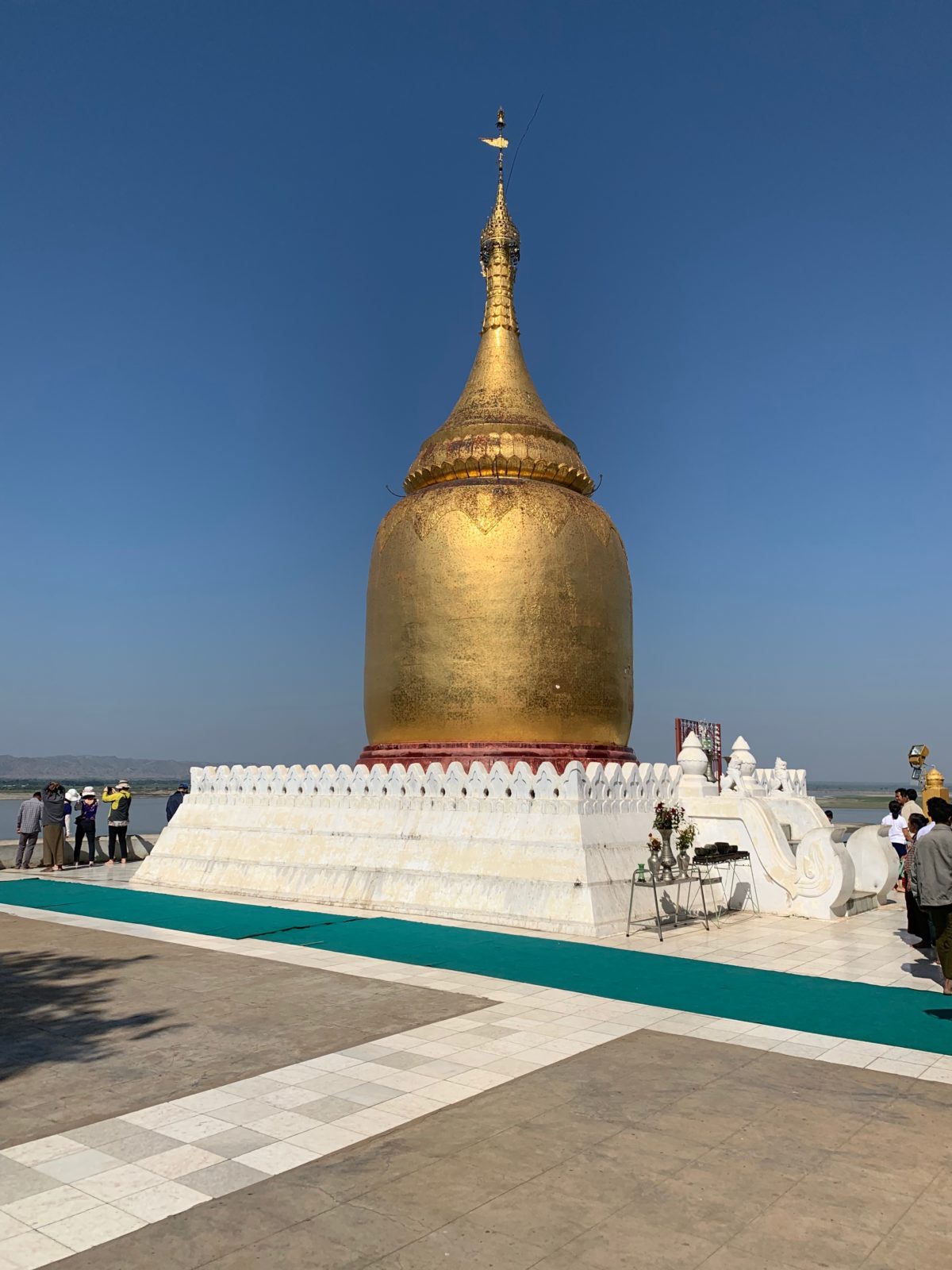
Bupaya Pagoda
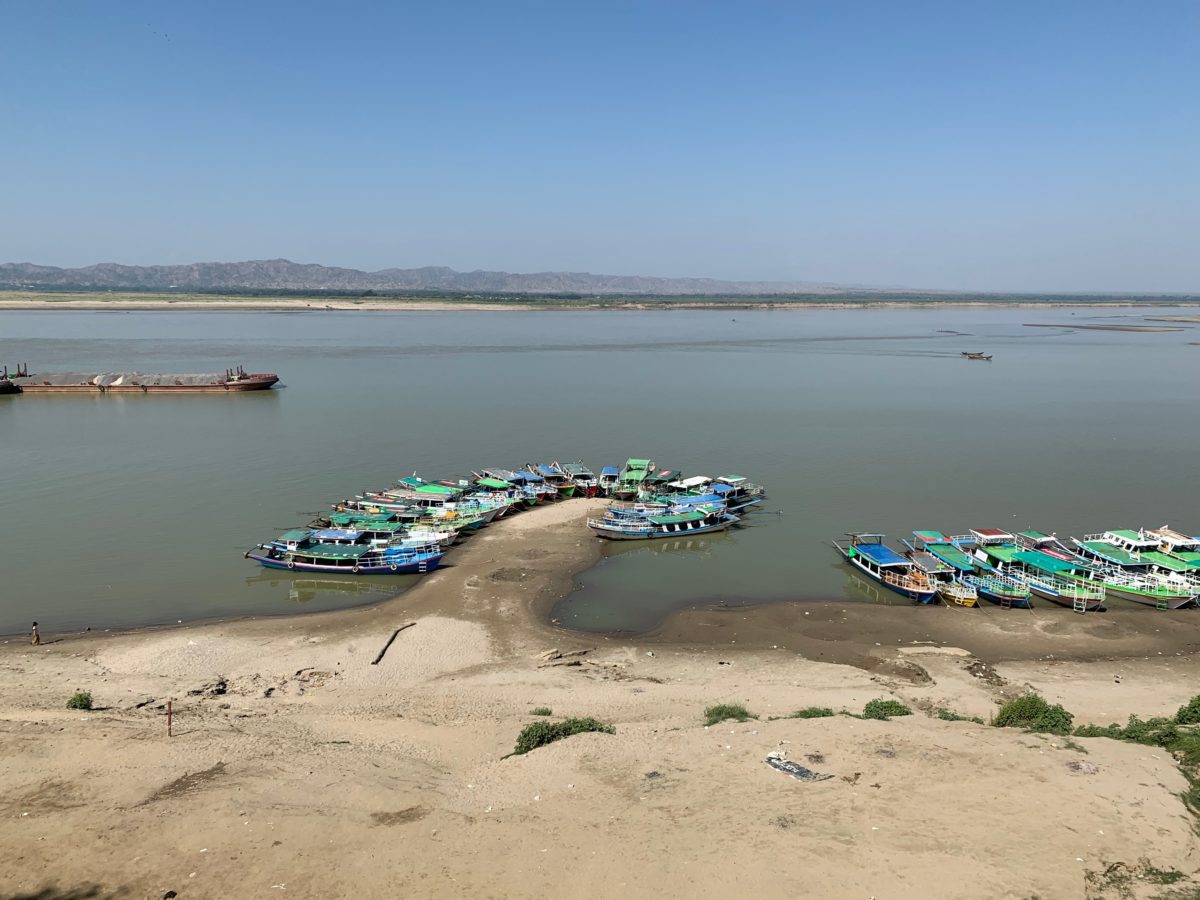
Irrawaddy River boats
We spent the next hour exploring the ruins within the walls of Old Bagan.
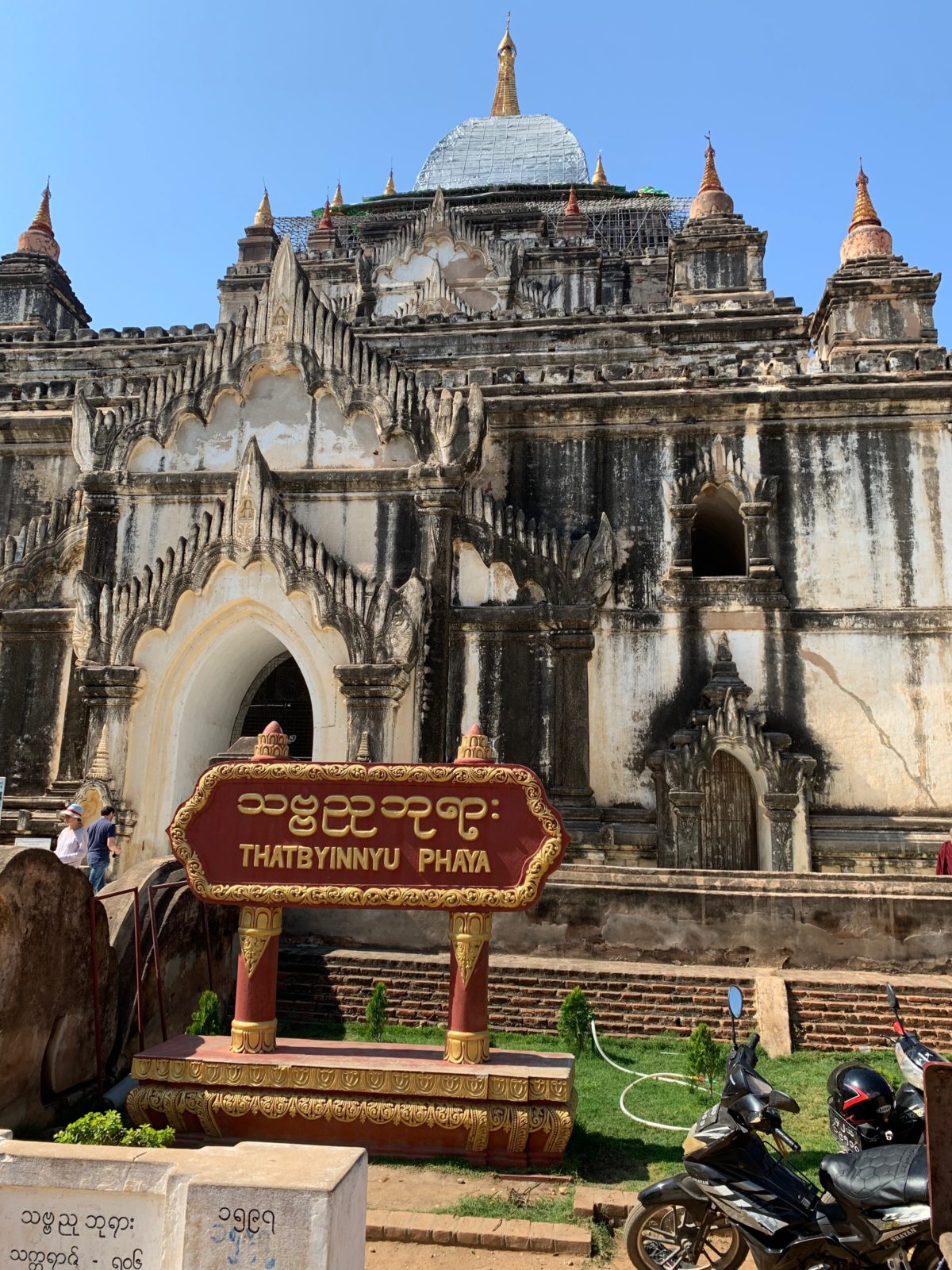
Thatbyinnyu Phaya
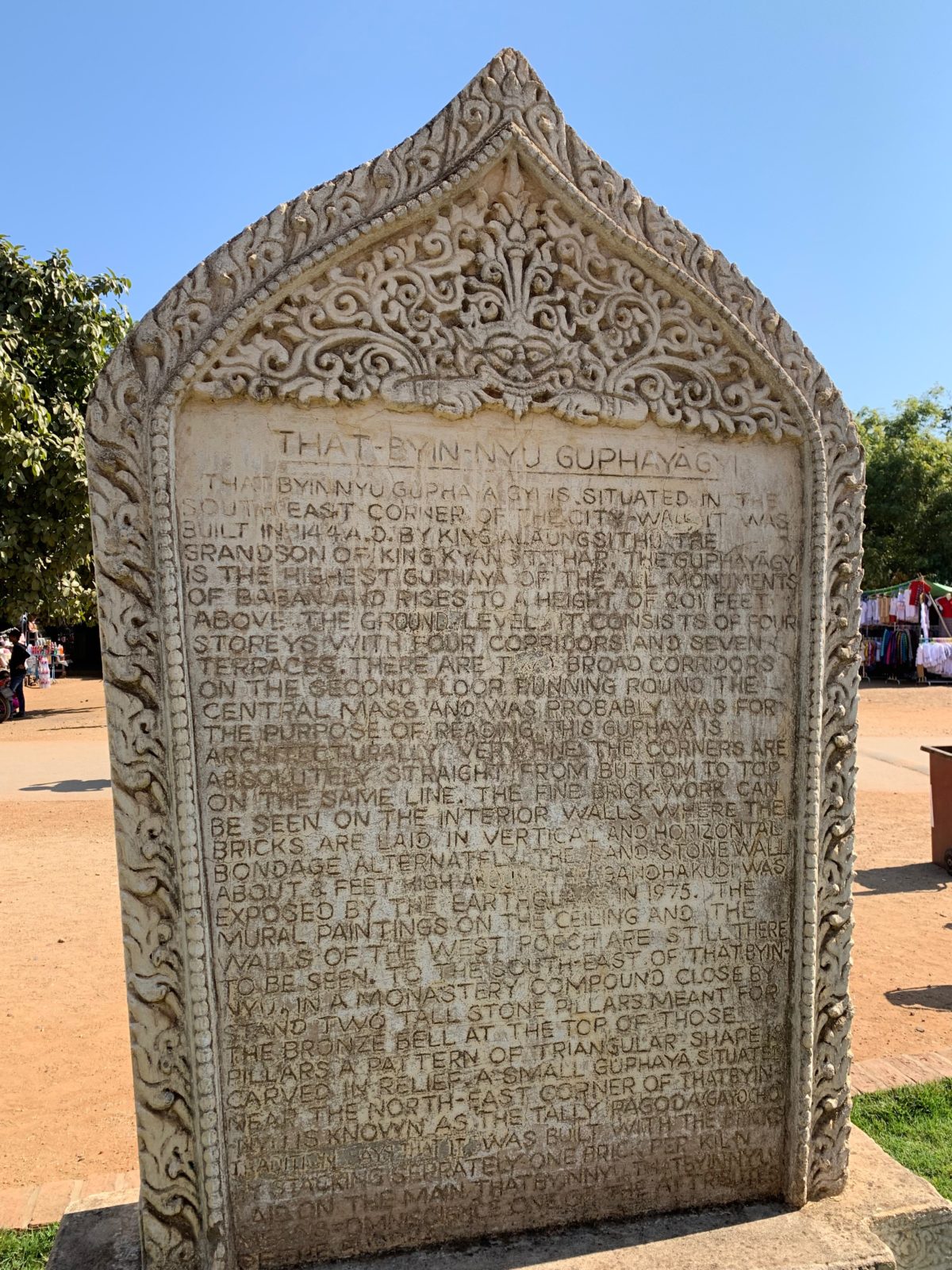
Stop 2: The Ananda Temple Area
We left the walls of Old Bagan and headed down Bagan-Nyaung U Road toward one of the most important and visited temples of Bagan, the massive Ananda Temple.
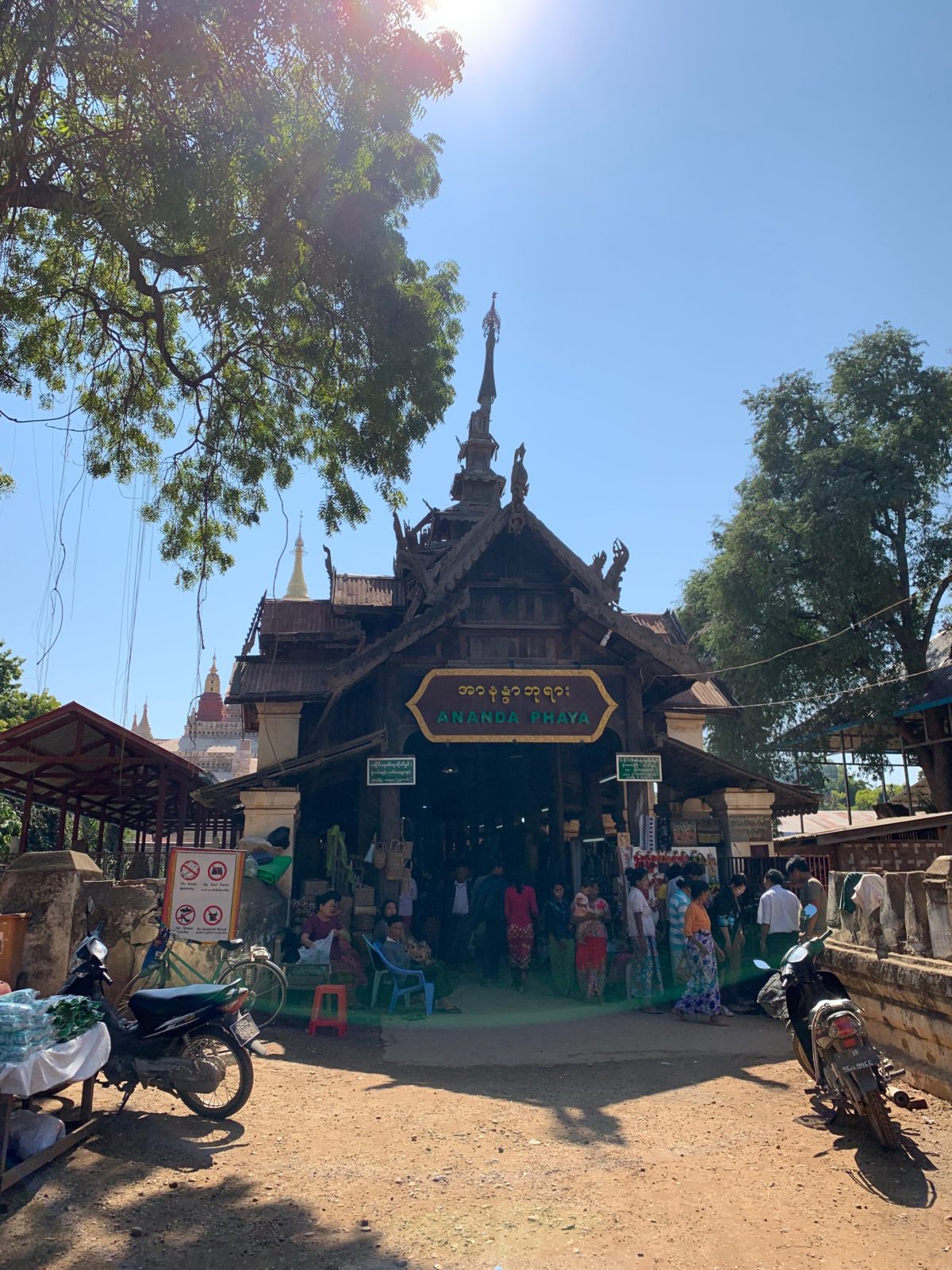
The North entrance to the Ananda Temple. Several entrances have shopping areas (like the one above)
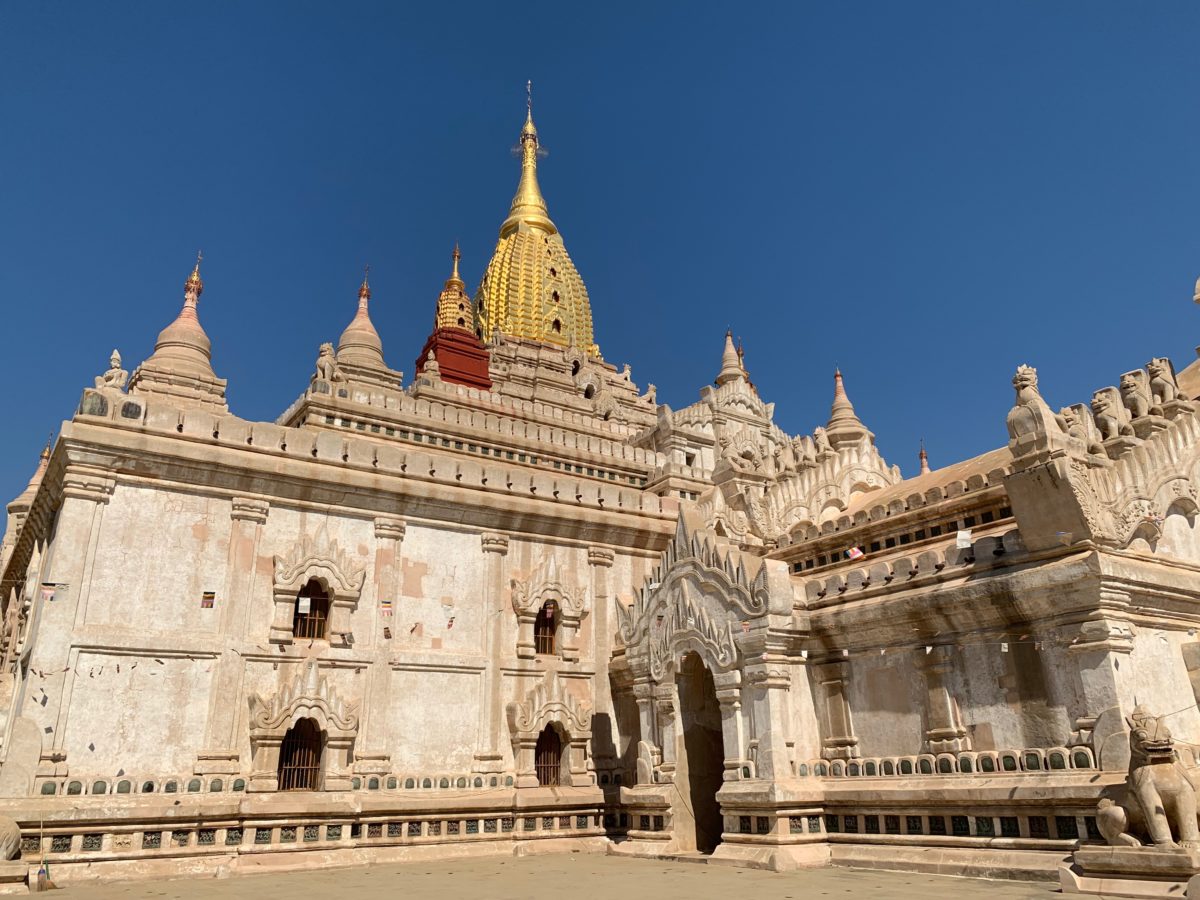
Ananda Phaya
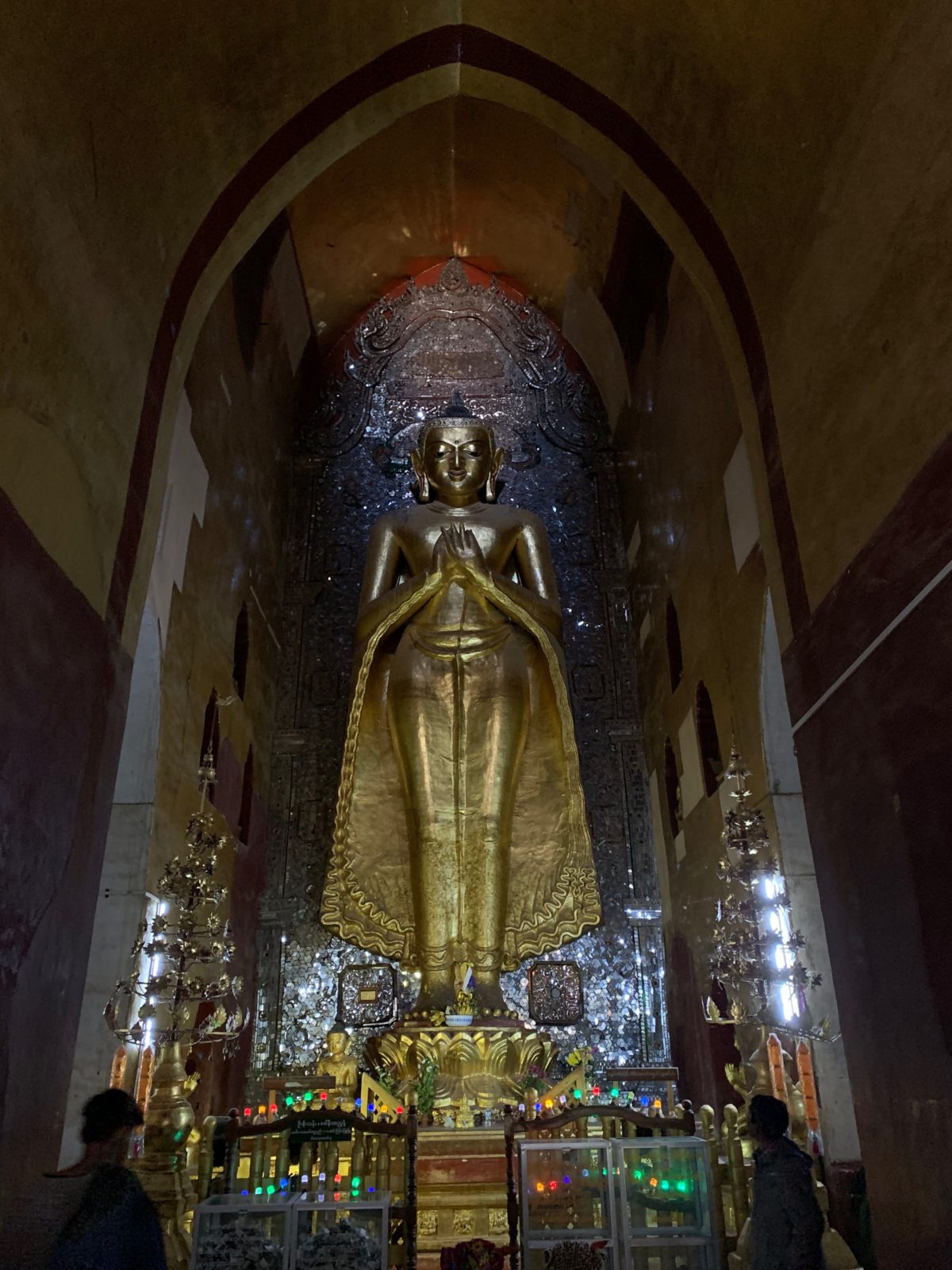
The Buddha at the North entrance (1 of 4 statues standing at each entrance to the Ananda Temple)
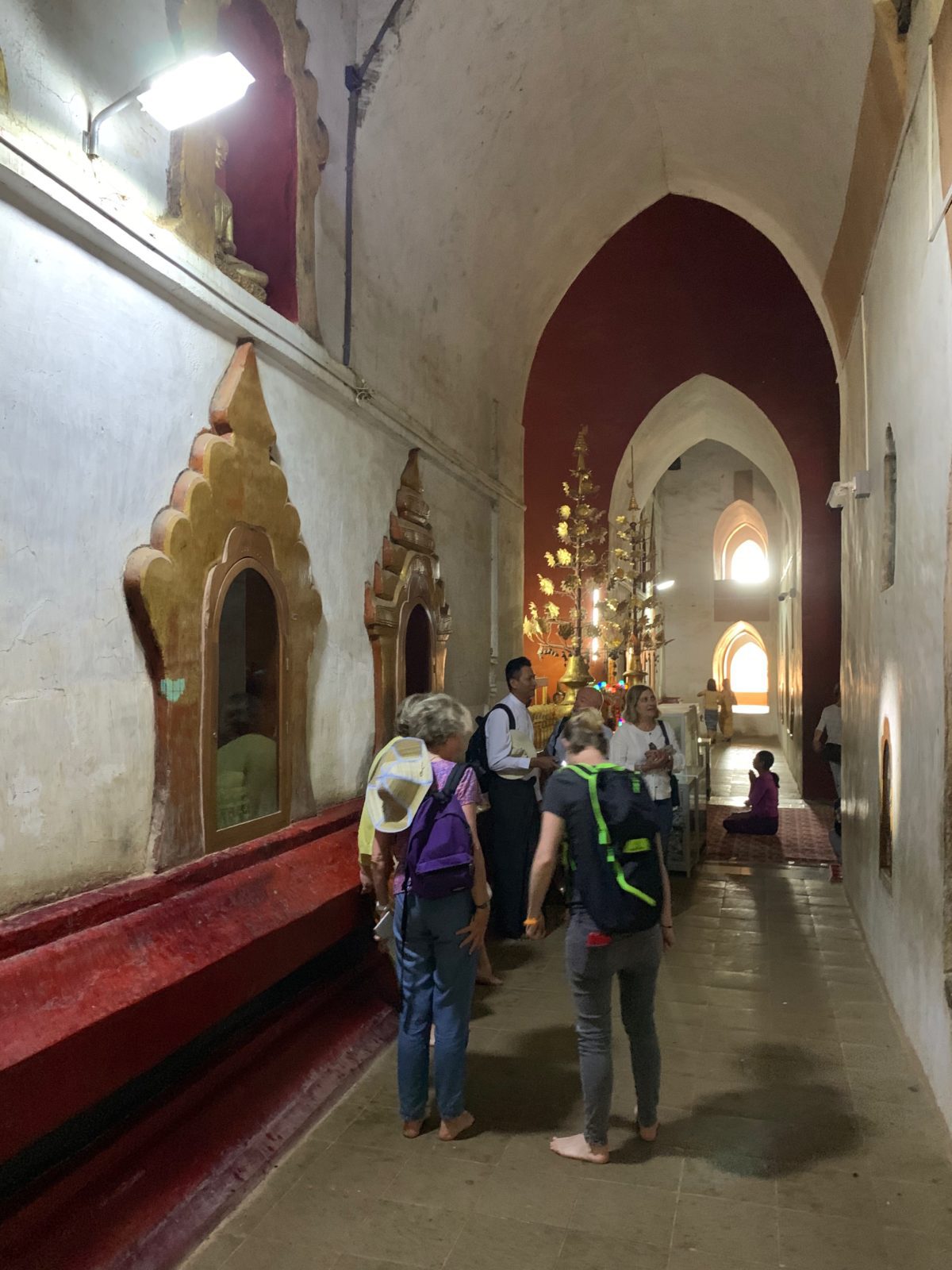
Inside the Ananda Phaya
East of Ananda Temple is where the crowds start to thin out and the jungle gives way to a dryer area with a high density of mostly smaller, but no less interesting, pagodas.
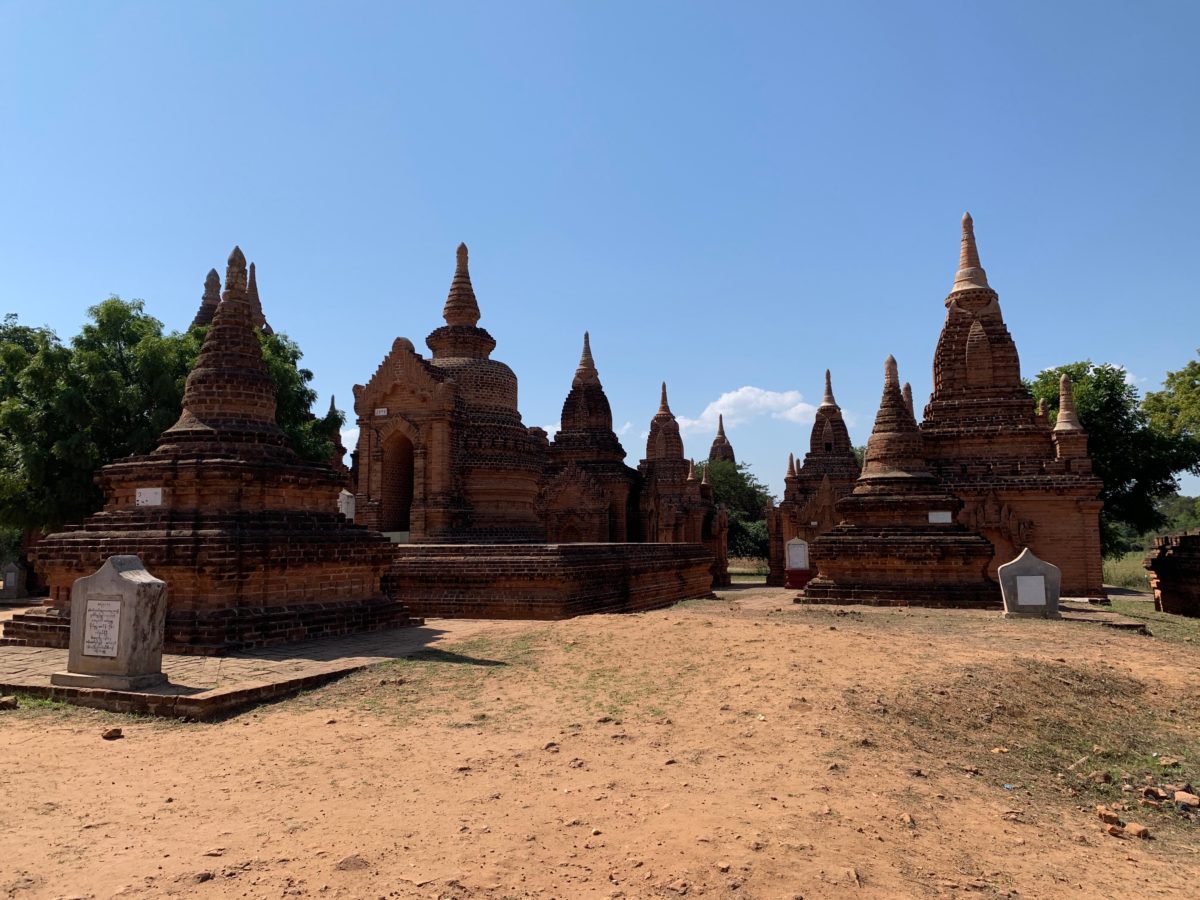
The “leaning tower of Bagan” complex (you can’t see it in this picture)
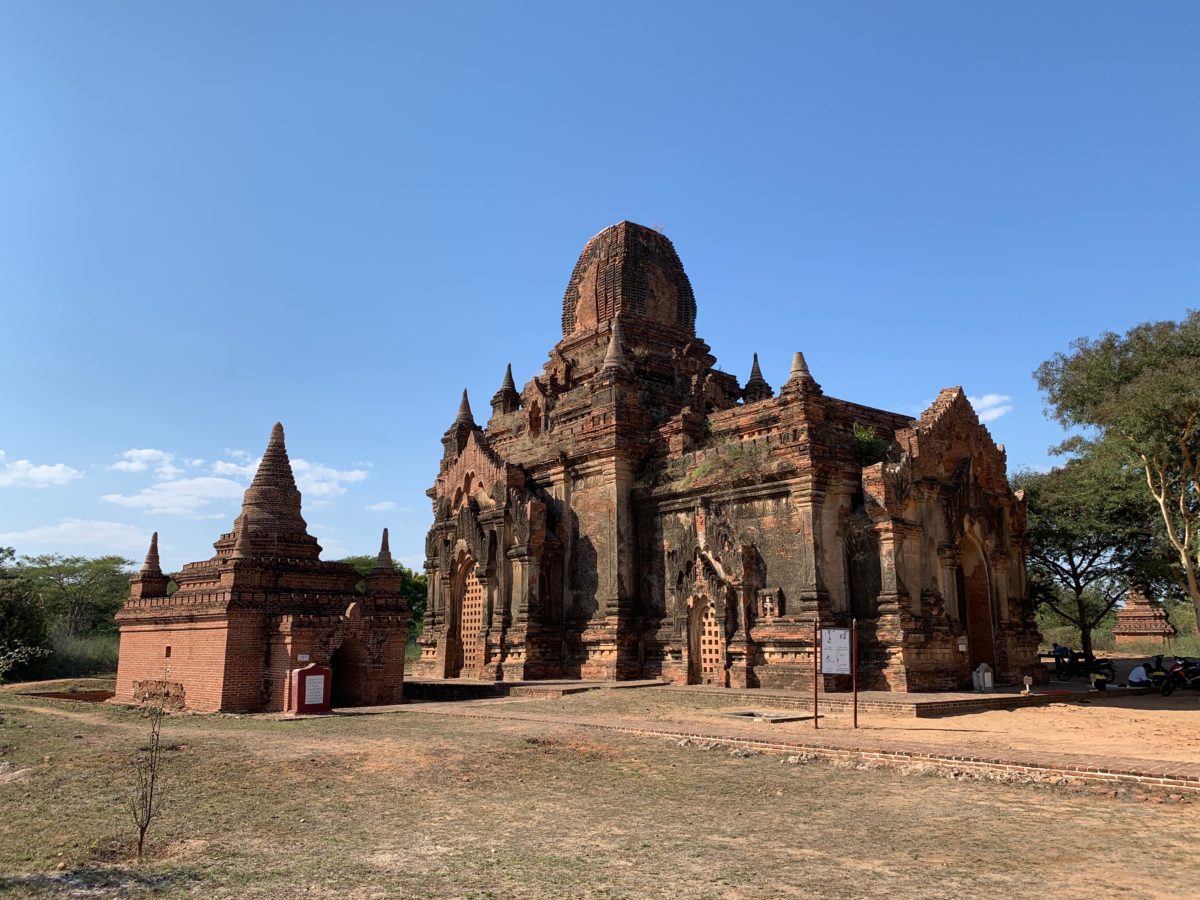
Just about every dirt road, no matter how small, led to something amazing – although most temples out here were not as large as the Ananda Phaya complex.
Of course, there was still the massive Htilominio Temple in this section of Bagan (which I don’t have a picture of because it was under heavy renovation).
Stop 3: The Shwe Zi Gone Pagoda Area (And Lunch)
After some more “off-roading” through this seemingly endless stretch of pagodas, we decided to grab some lunch.
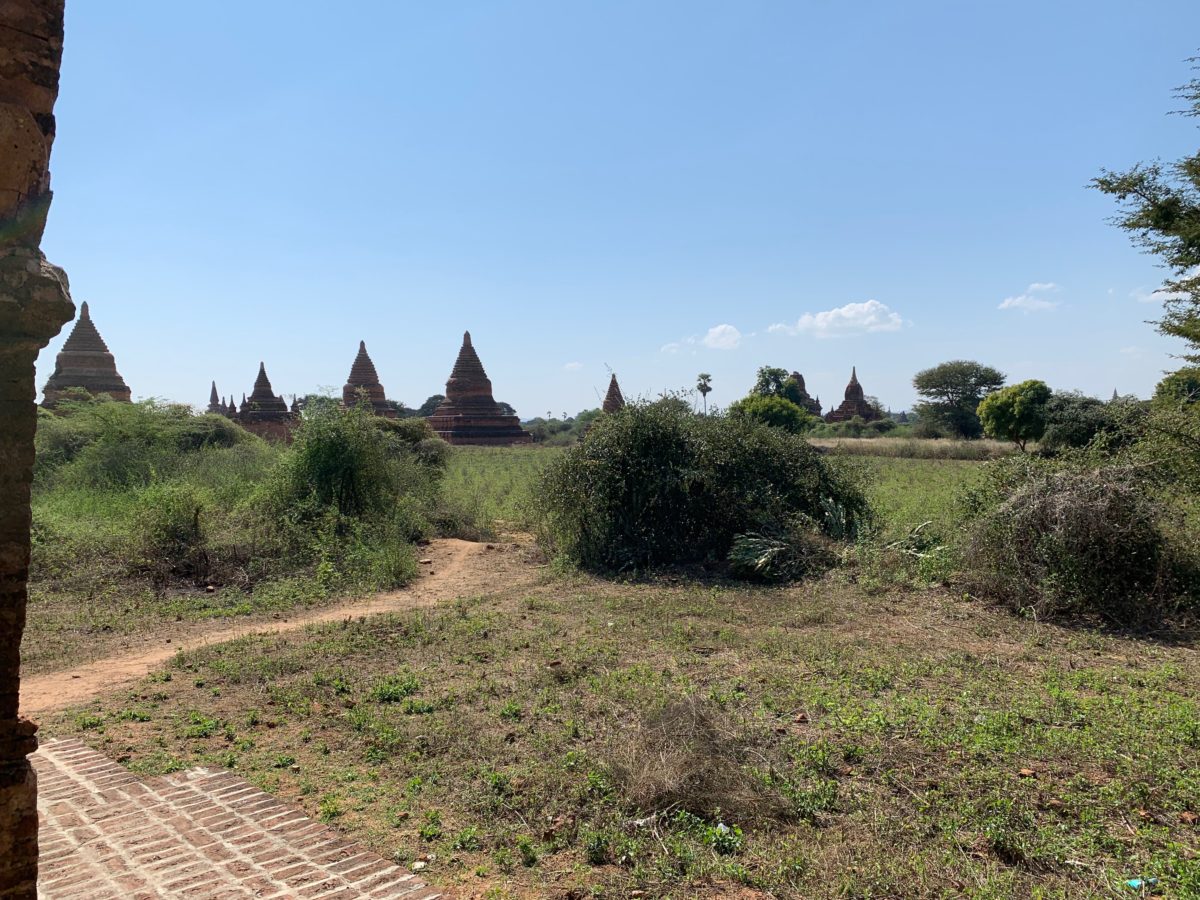
We followed the largest dirt-road we could find toward an area of hotels we found along the Irrawaddy River.
We settled on a restaurant called Art@Bagan along the river with awesome views, good food, and ice-cold Myanmar Beer.
After lunch, we headed over to the Shwe Zi Gone Pagoda, another one of Bagan’s most popular and important pagodas.
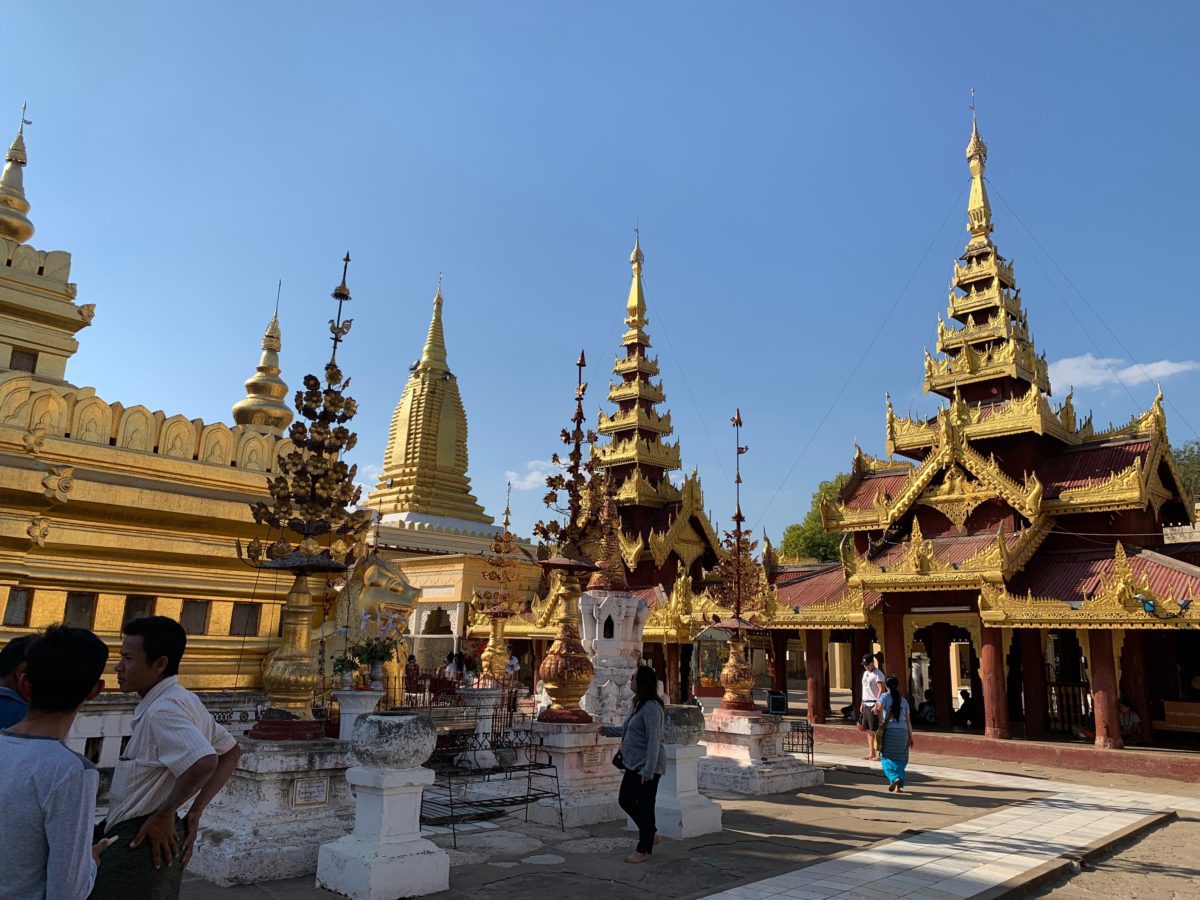
Also written as “Shwezigone”, it began construction in 1000 A.D. and was the prototype for the Kuthodaw pagoda in Mandalay.
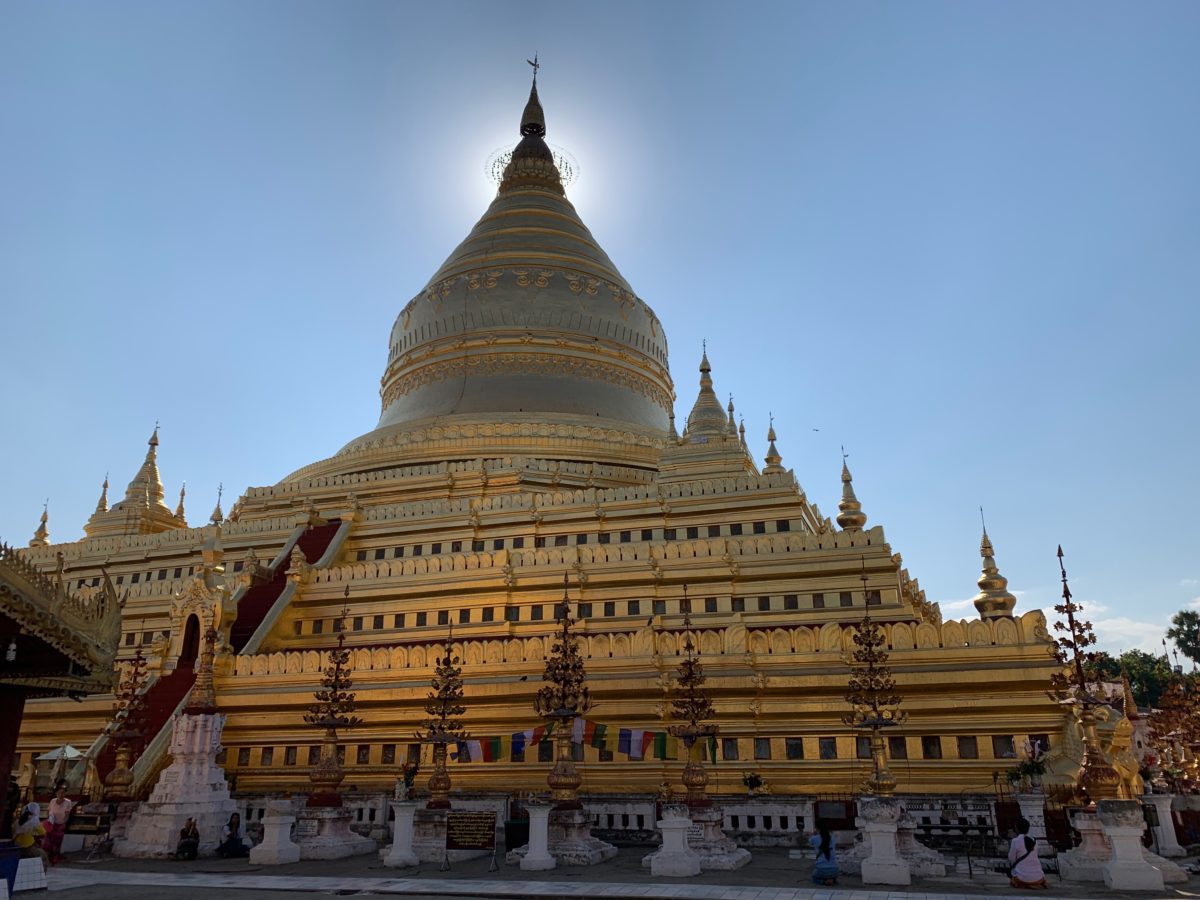
The Swezigone Pagoda
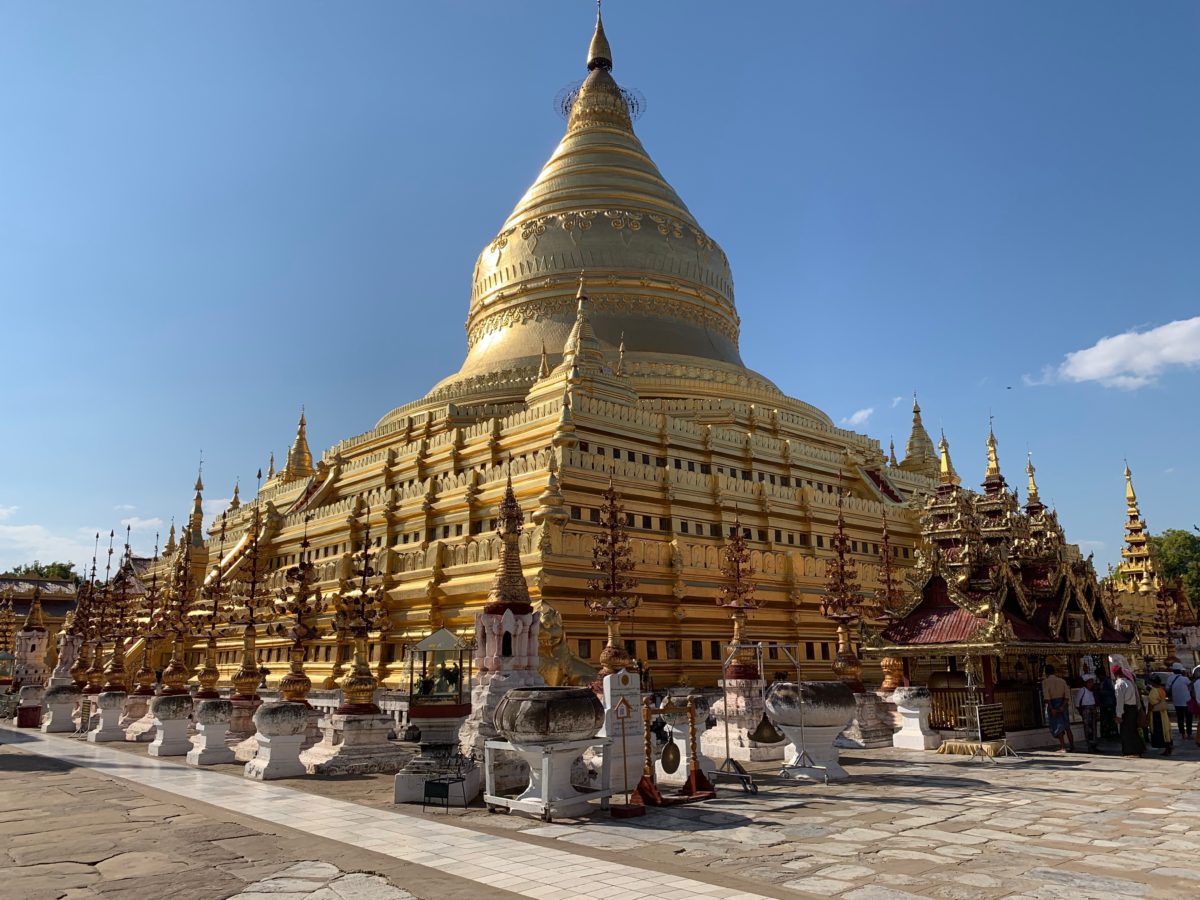
The Shwe Zi Gone pagoda is considered an important religious place in Buddhism because it is believed to house a bone and tooth relic of Buddha himself.
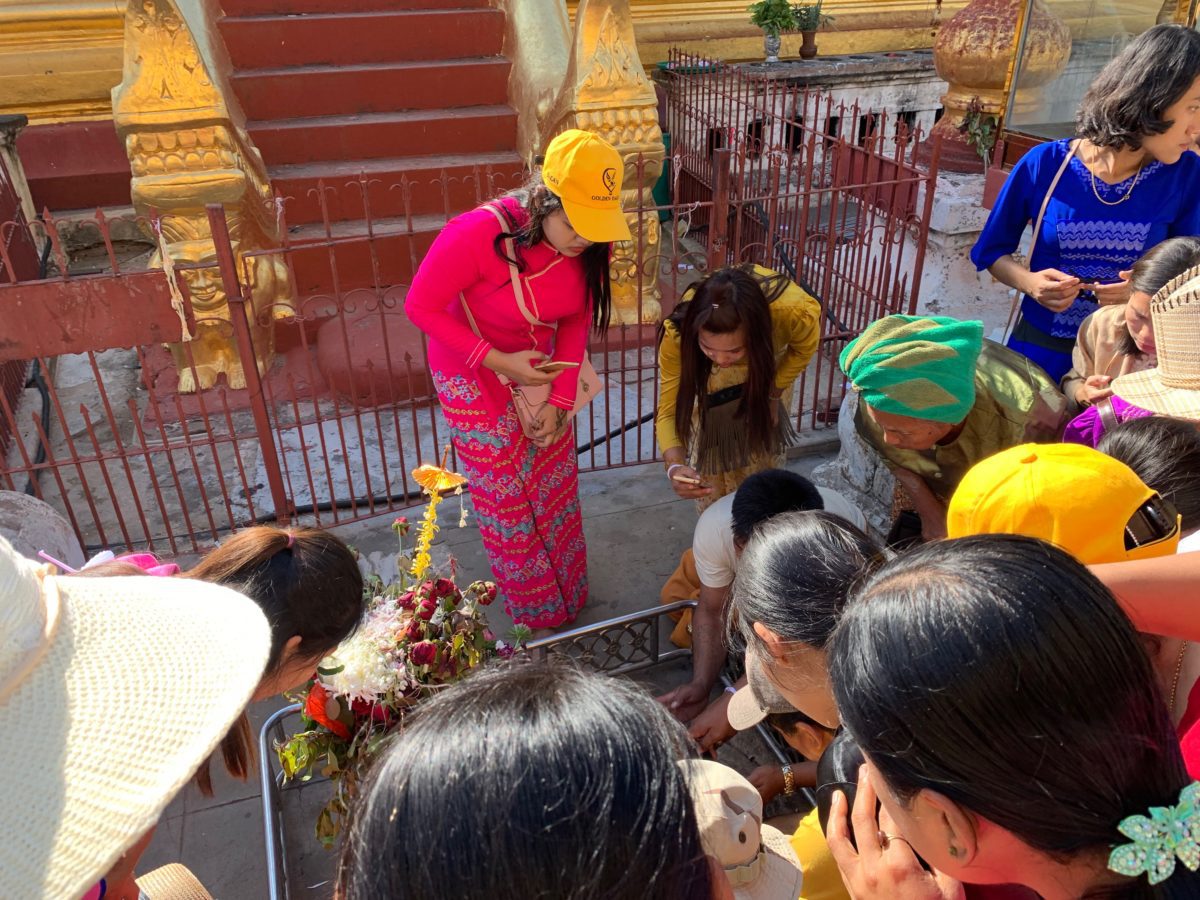
Pilgrims and tourists examine the Buddhist relics
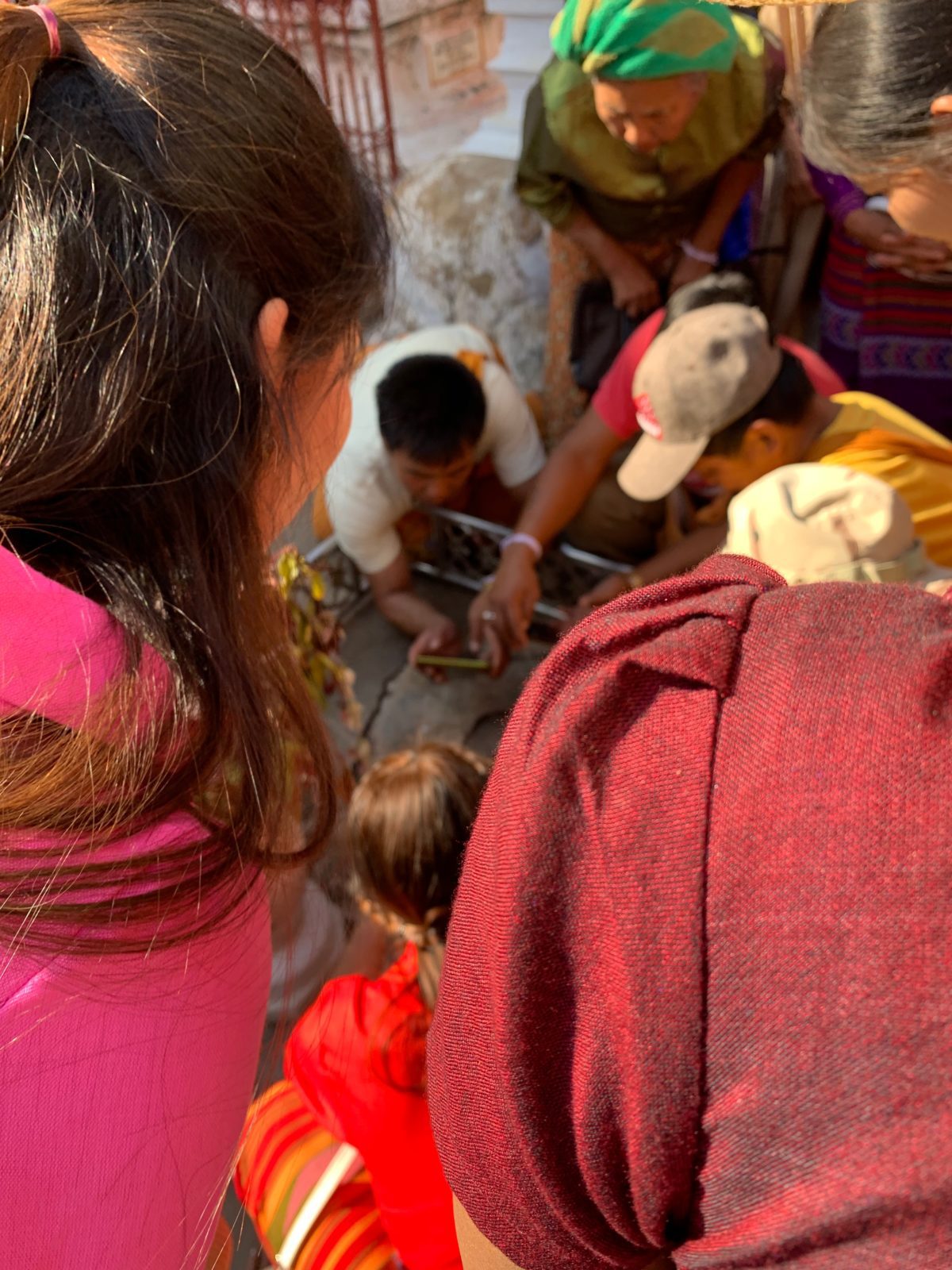
Curiously enough, it was here we luckily ran into super-awesome fellow travel-blogger, Azusa from Curiosity-Travel.
She had just witnessed me [involuntarily] buy a jade bracelet from a very persistent (and funny) sales-woman and she was kinda laughing at me. And rightfully so.
Turns out, her scooter was blocking my scooter in, so we struck up conversation and it turns out she was heading our direction. The three of us headed off through the town of Nyaung-U to our next destination.
Stop 4: The Aureum Palace Hotel & Resort Bagan And Thambula Area
The Aureum Palace Hotel and Resort was famous for its Nan Myint Tower, the highest structure in Bagan. We paid the nominal entrance fee and entered the tower.
We arrived a couple hours before sunset so there weren’t a whole lot of people there [yet].
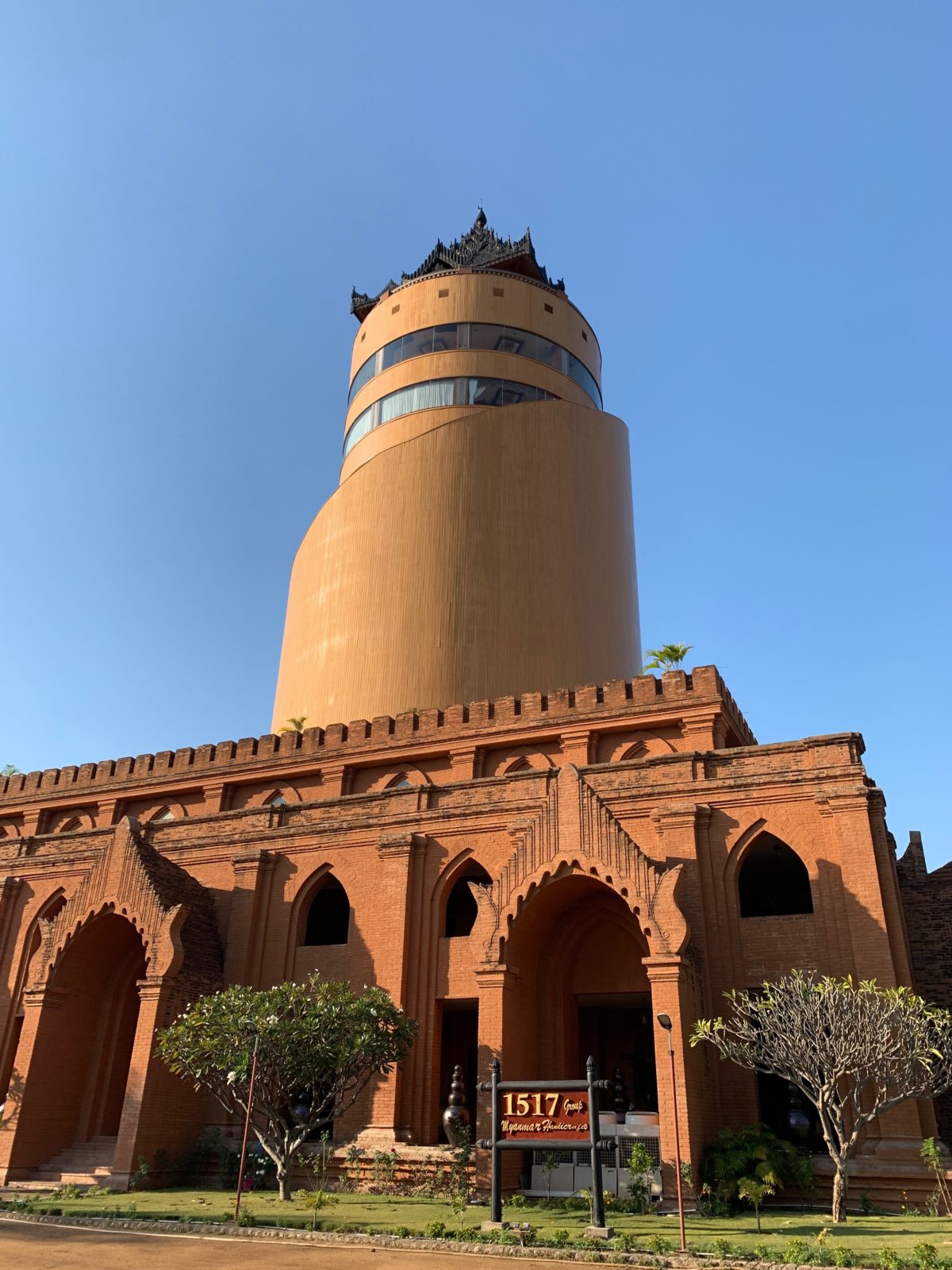
The views of Bagan from the observation tower were unexpected and surprisingly good.
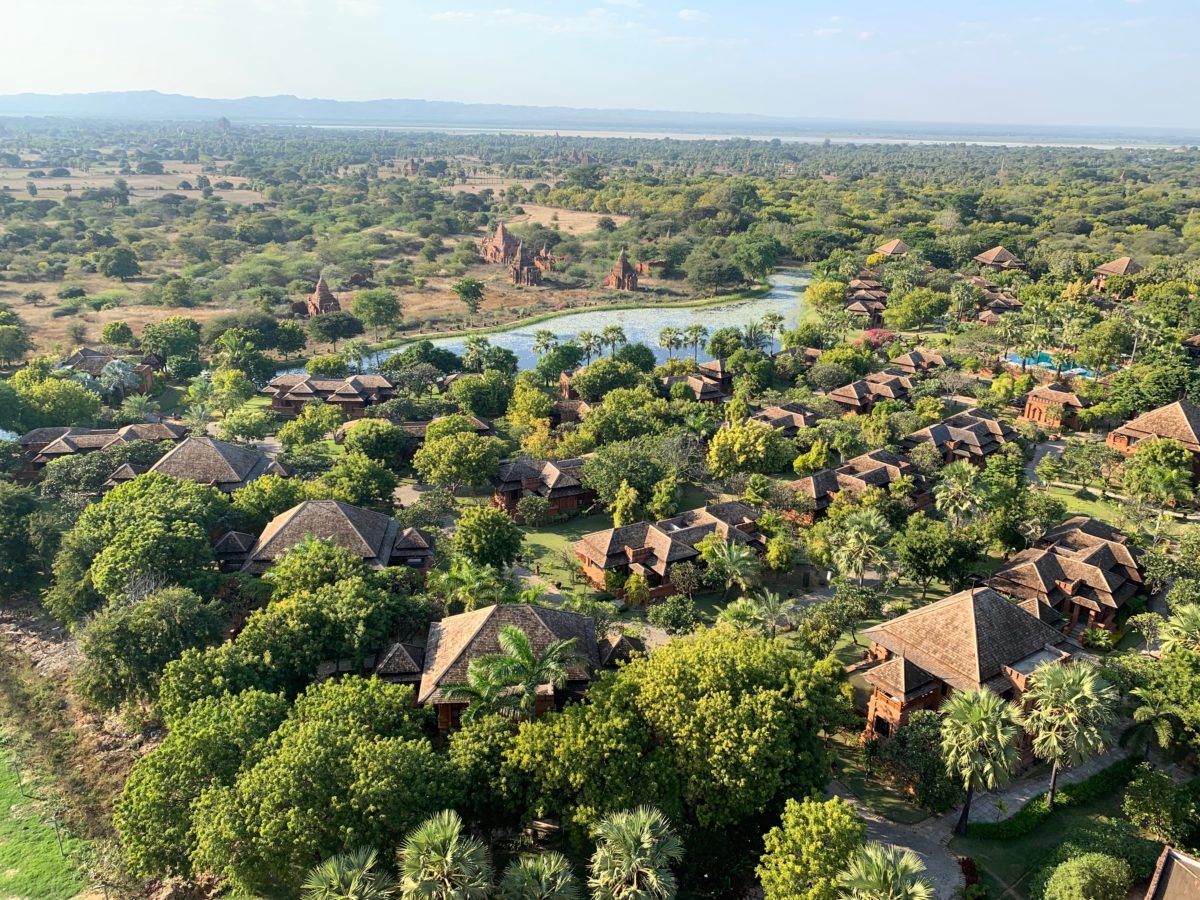
View of the resort (from the tower)
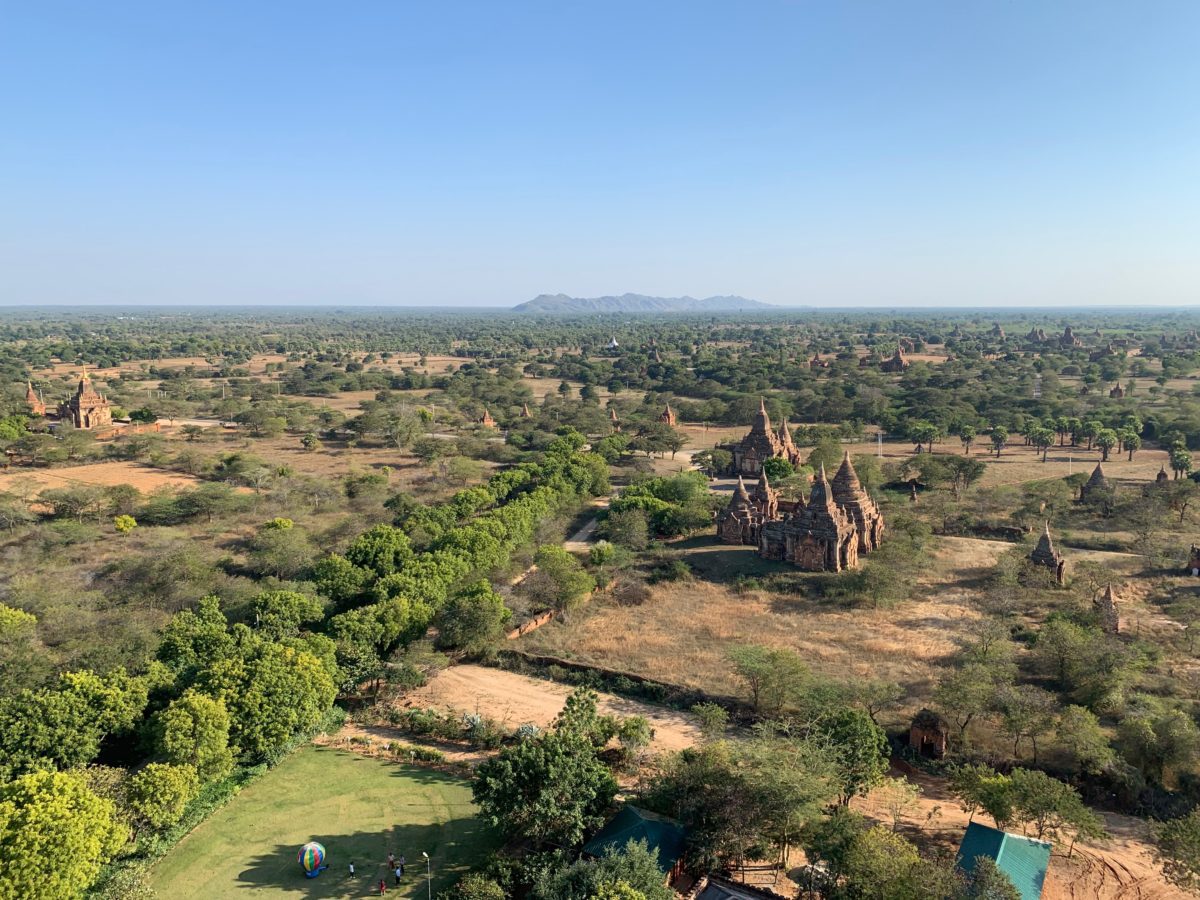
View south of Popa Mountain

Panoramic view west toward the Irrawaddy River
I’d strongly recommend a visit to this tower, especially if you are unable to do a hot-air balloon ride over Bagan.
We next headed south to the Thambula complex area, one of the most isolated and remote areas of Bagan.
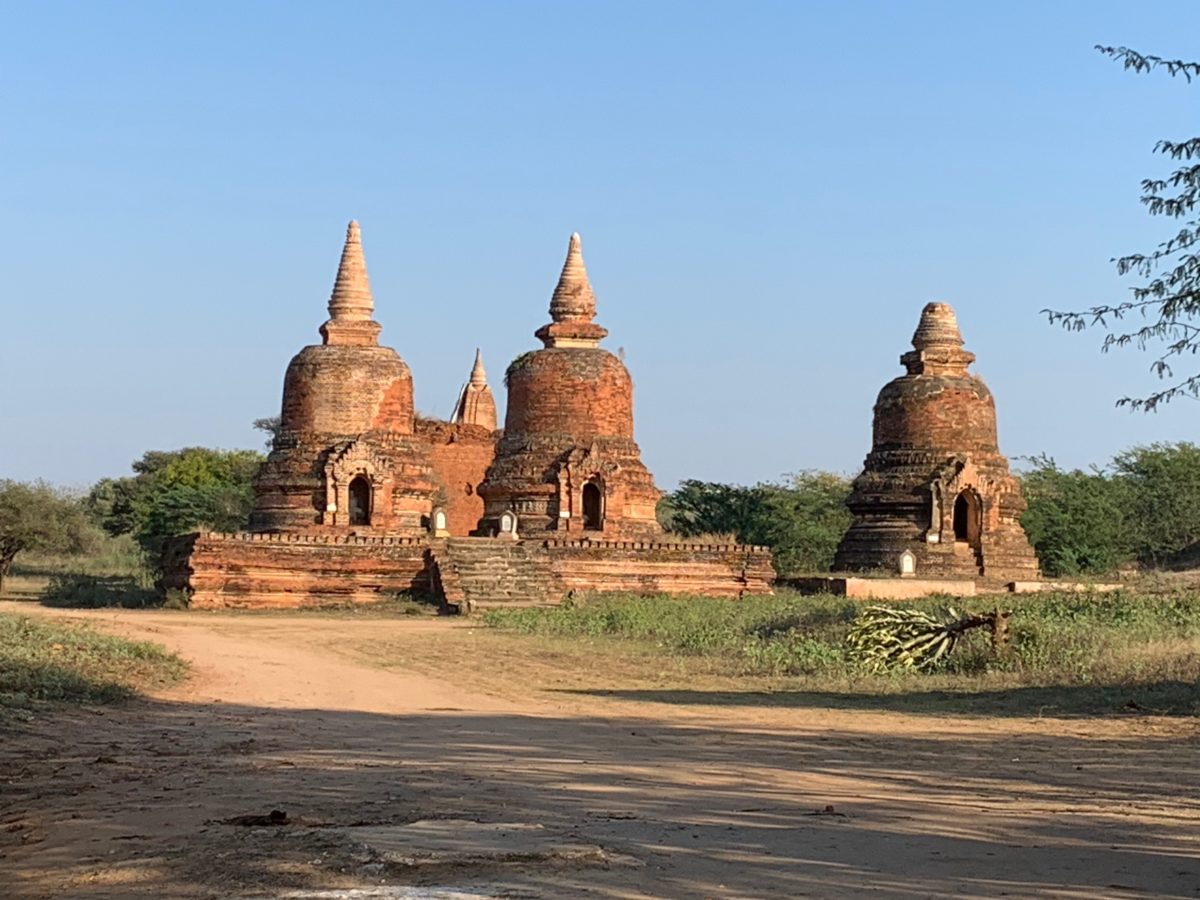
Although it was remote, it was also one of the more impressive areas in terms of the variety and uniqueness of the pagodas.
Did I mention this place had almost no other tourists?
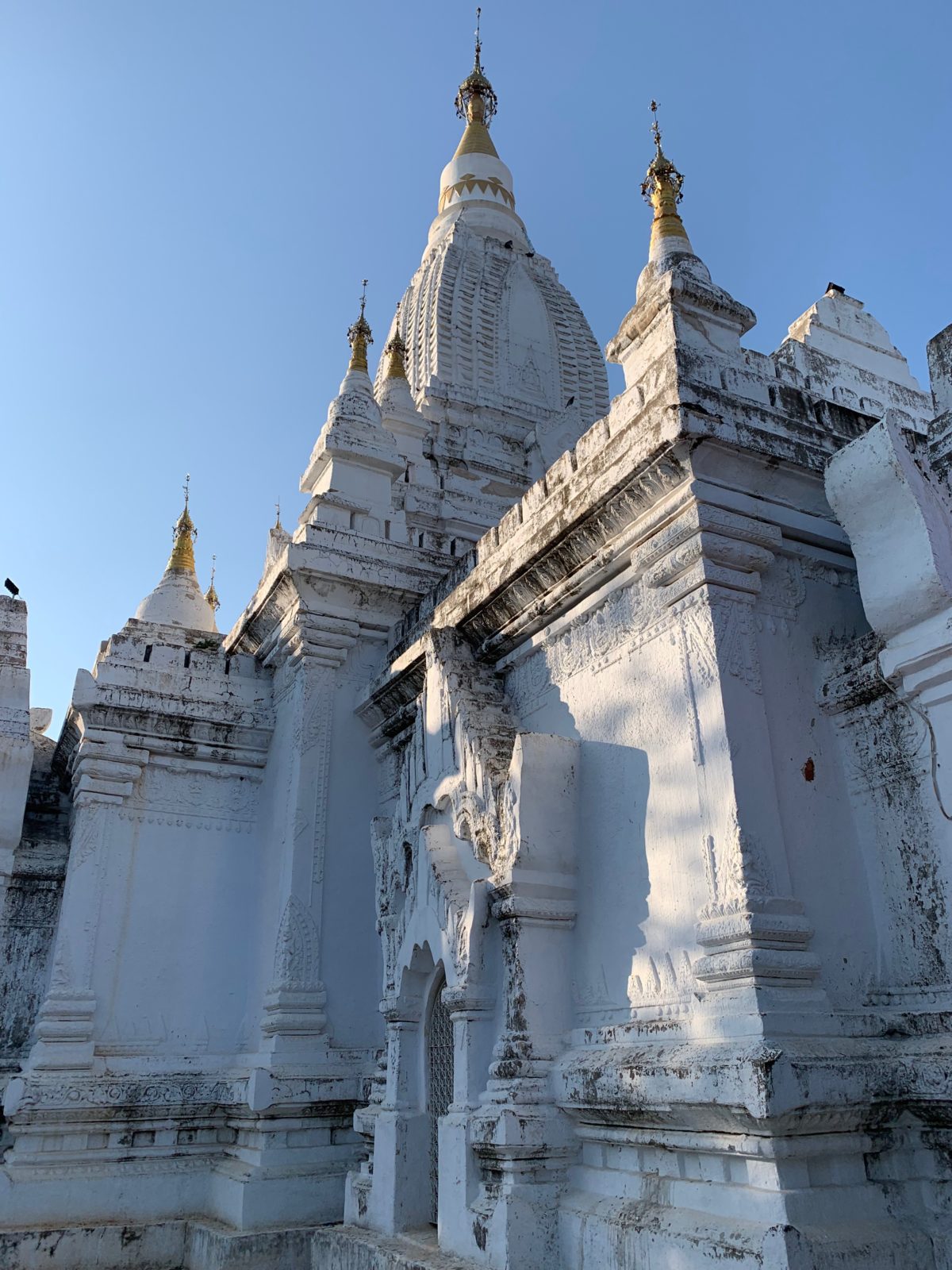
This large white pagoda dominates the skyline here
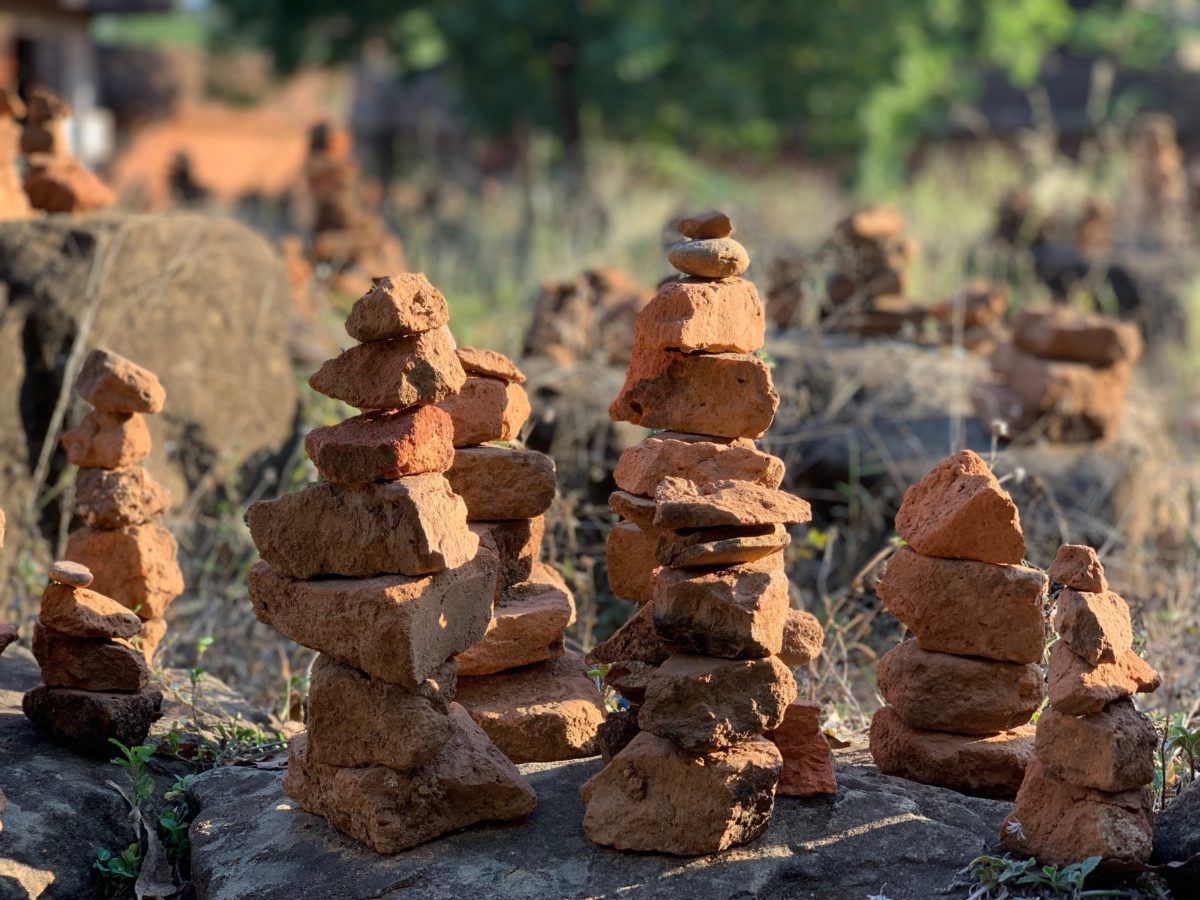
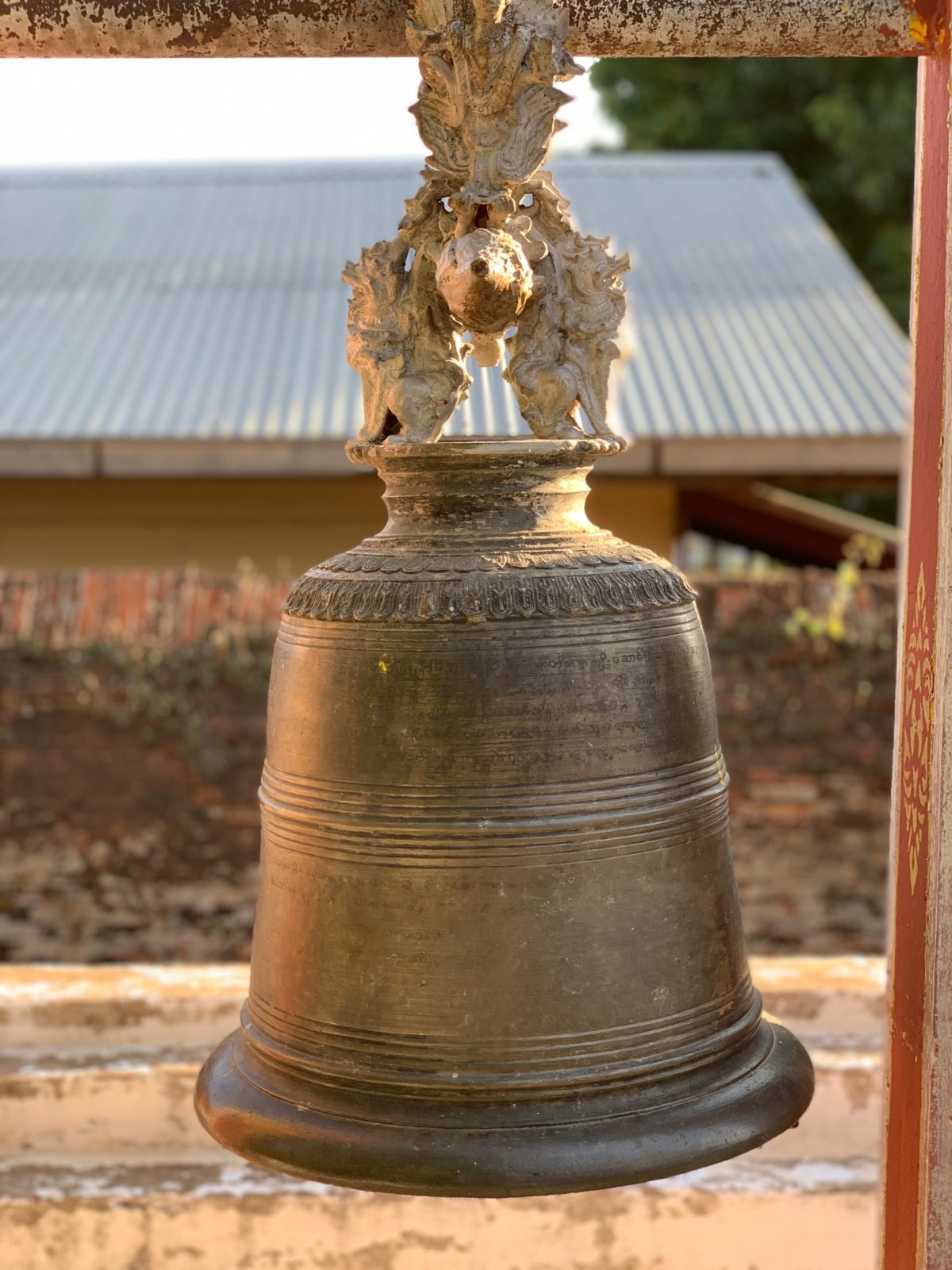
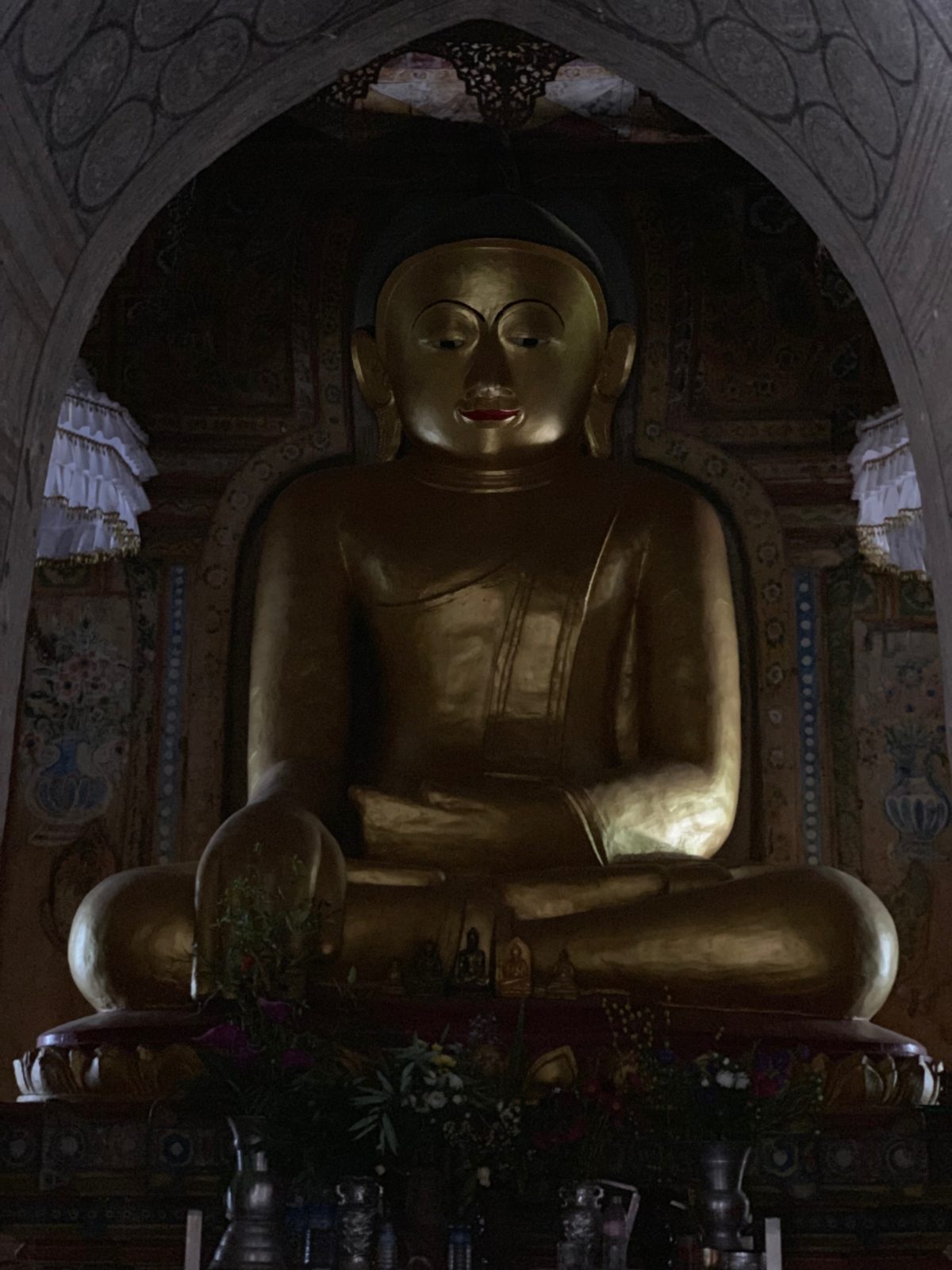
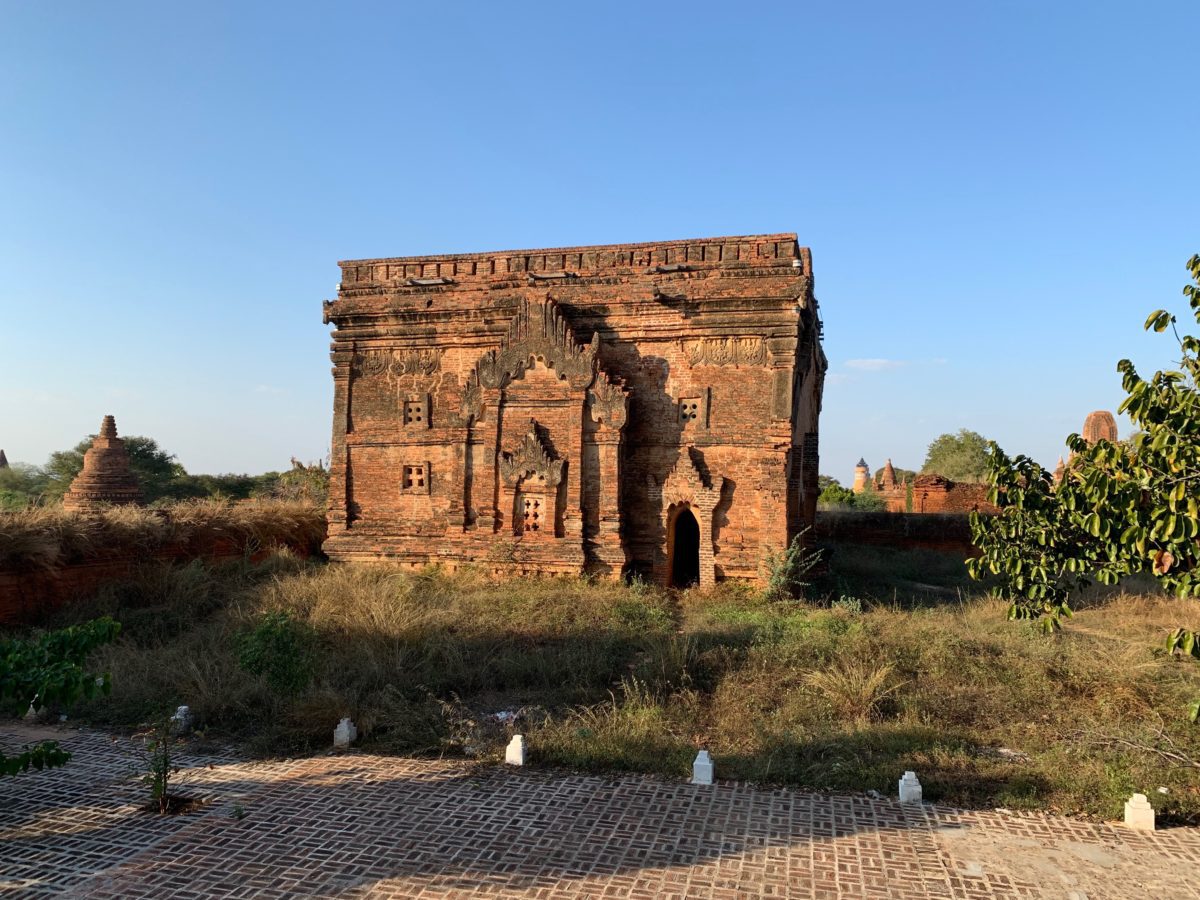
Everything is awesome!
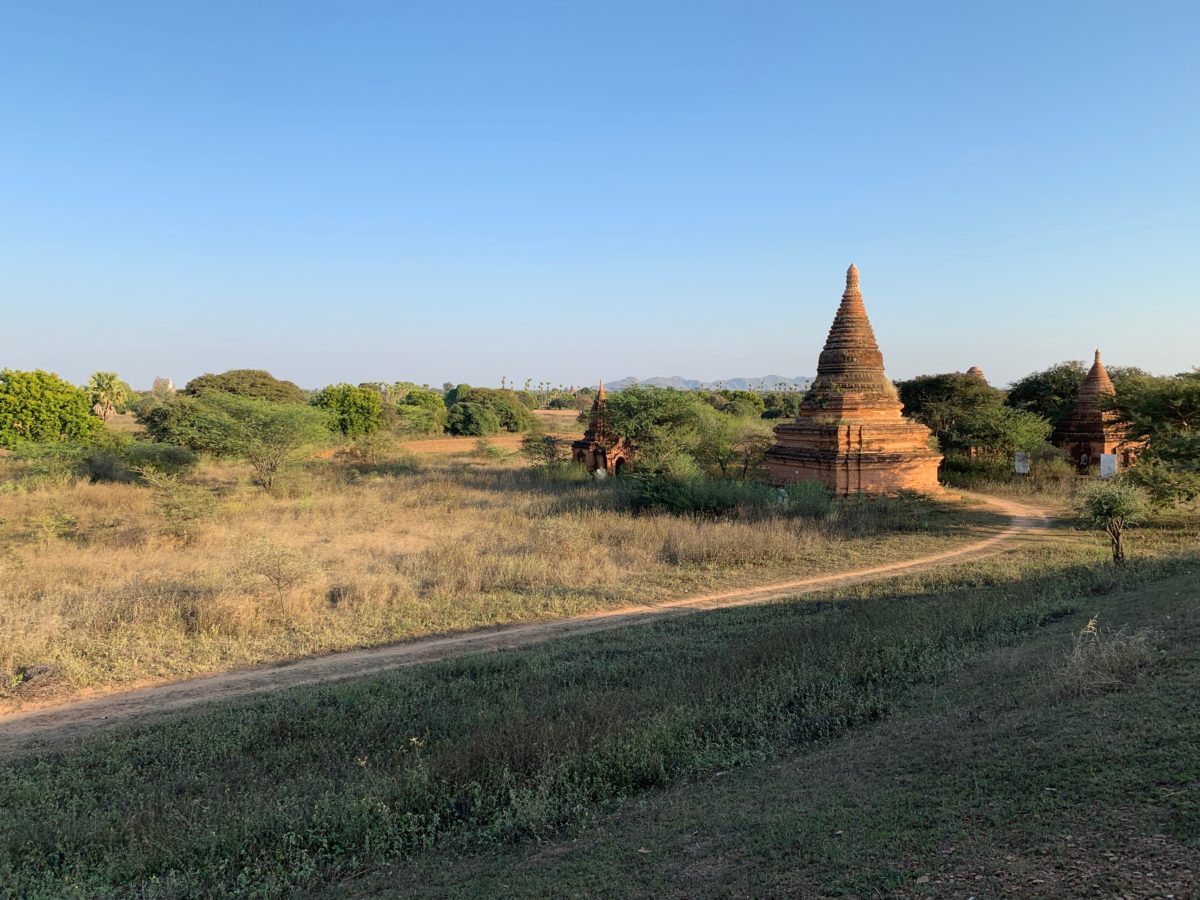
Stop 5: Sulamani Manmade Sunset Hill
By now, the sun was getting real low. We knew we needed to begin making our way west, back to our hotel in Old Bagan. More pressing however was our need to find a place to watch the sunset.
As luck would have it, on our way back, we began seeing vendors setting up shop in an area south of the Sulamani pagoda. Soon, we started seeing tour buses full of people arriving.
Apparently, we had stumbled on to perhaps the most popular place to watch sunsets in Bagan, Sulamani Manmade Sunset Hill, or simply “Sunset Hill”. We grabbed a spot and waited for the sunset.
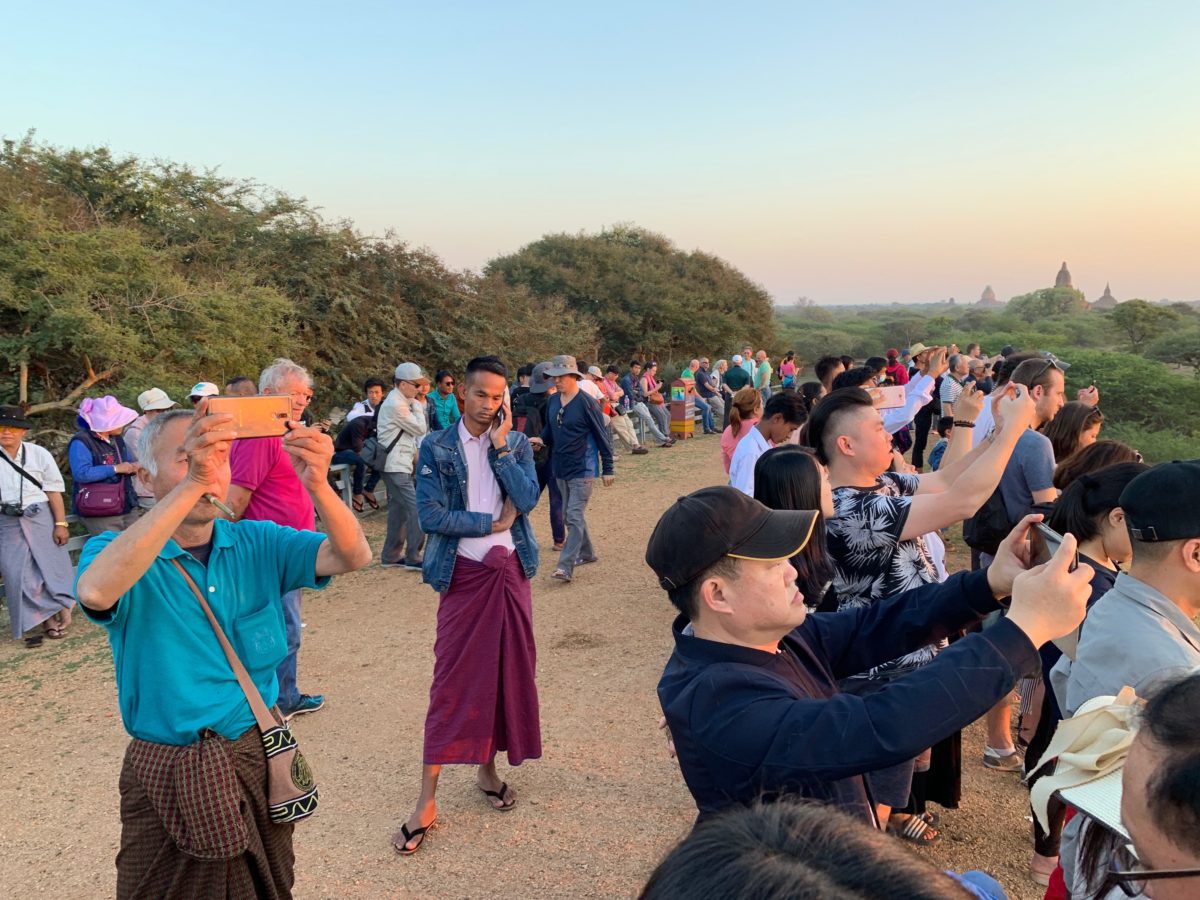
Tourists to the left of me…
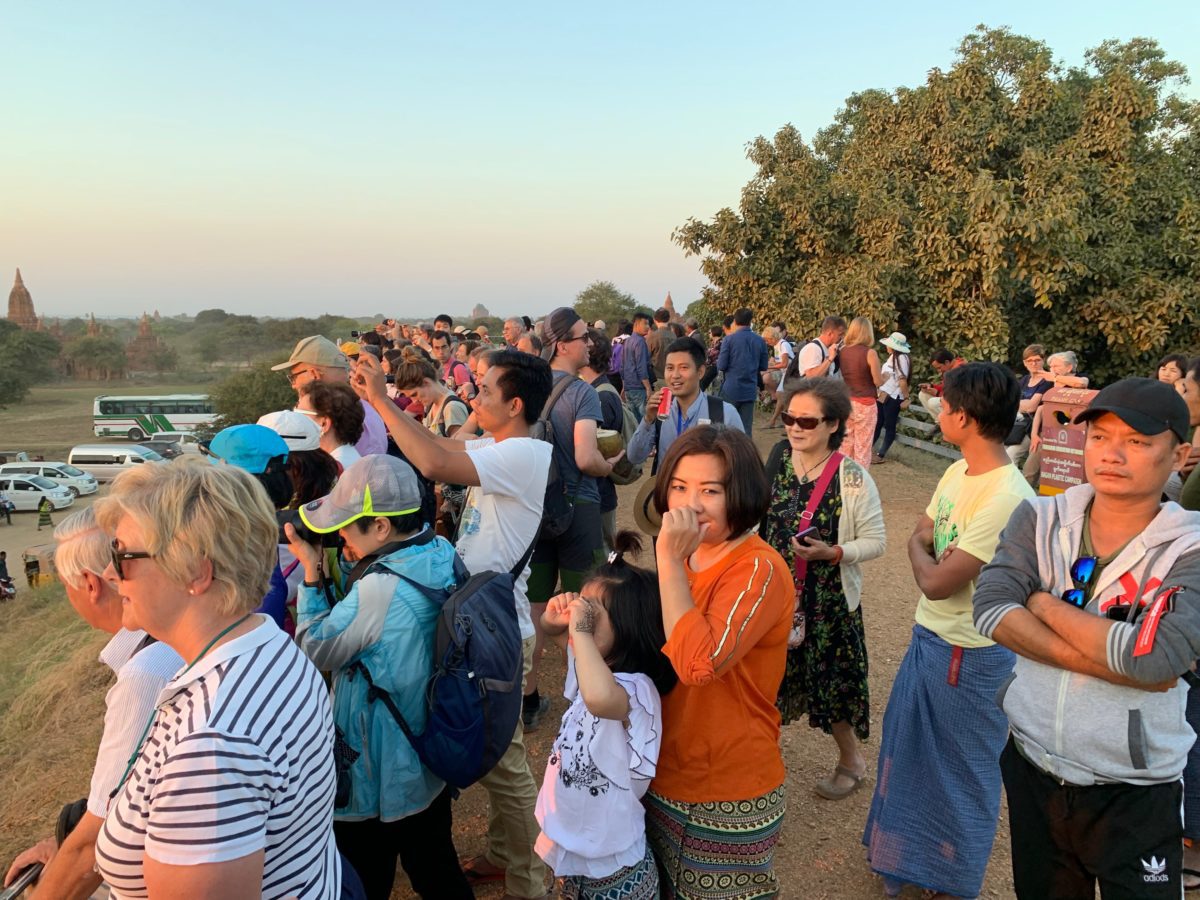
And tourists to the right…
Here are some of the shots we got [raw] with no filters or effects.
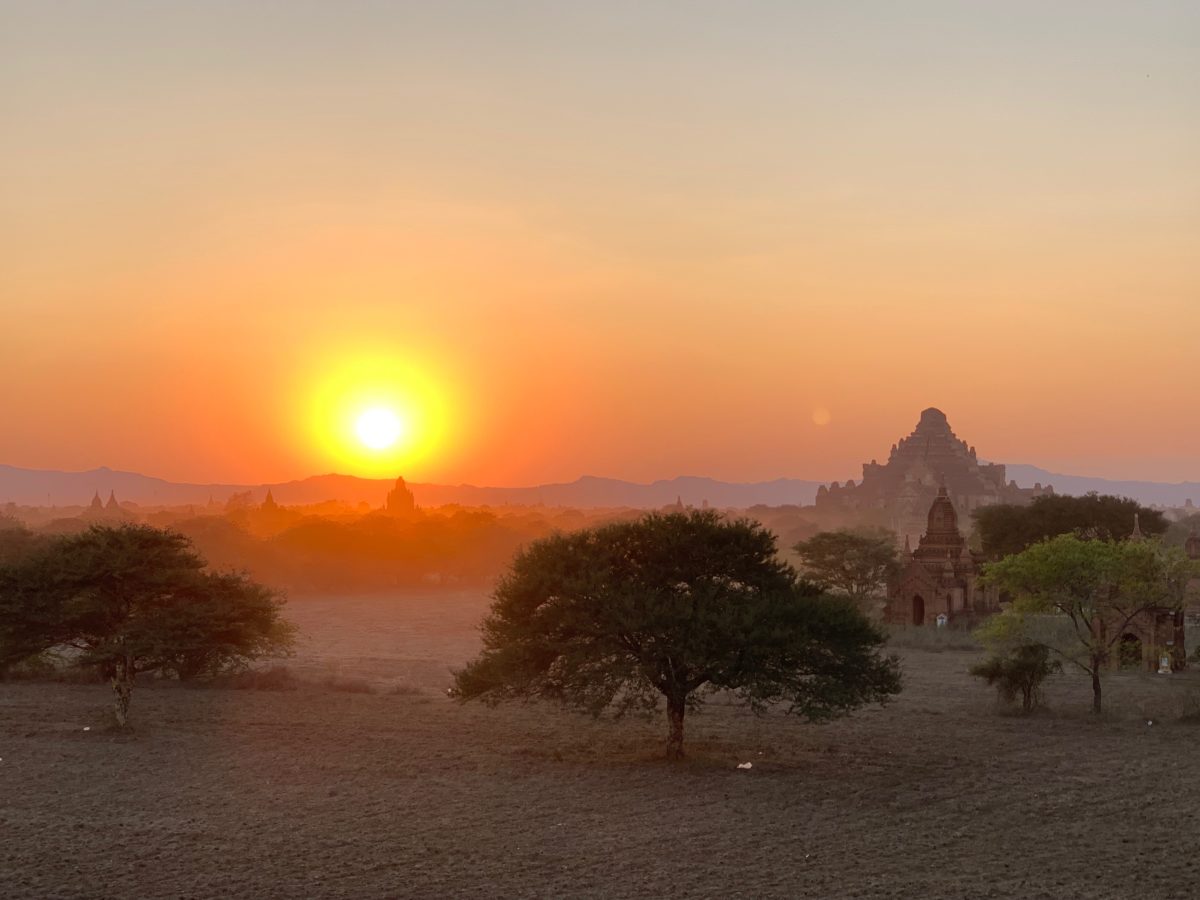
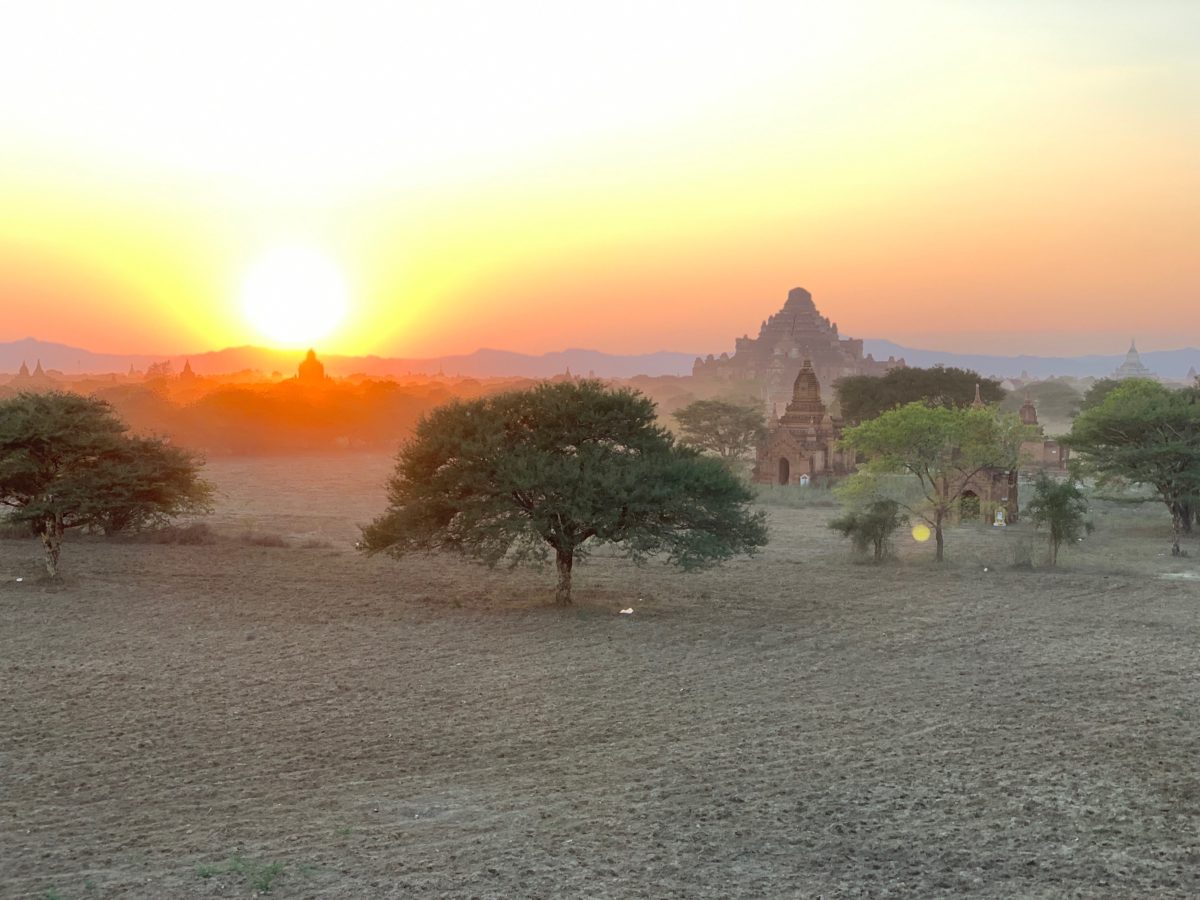
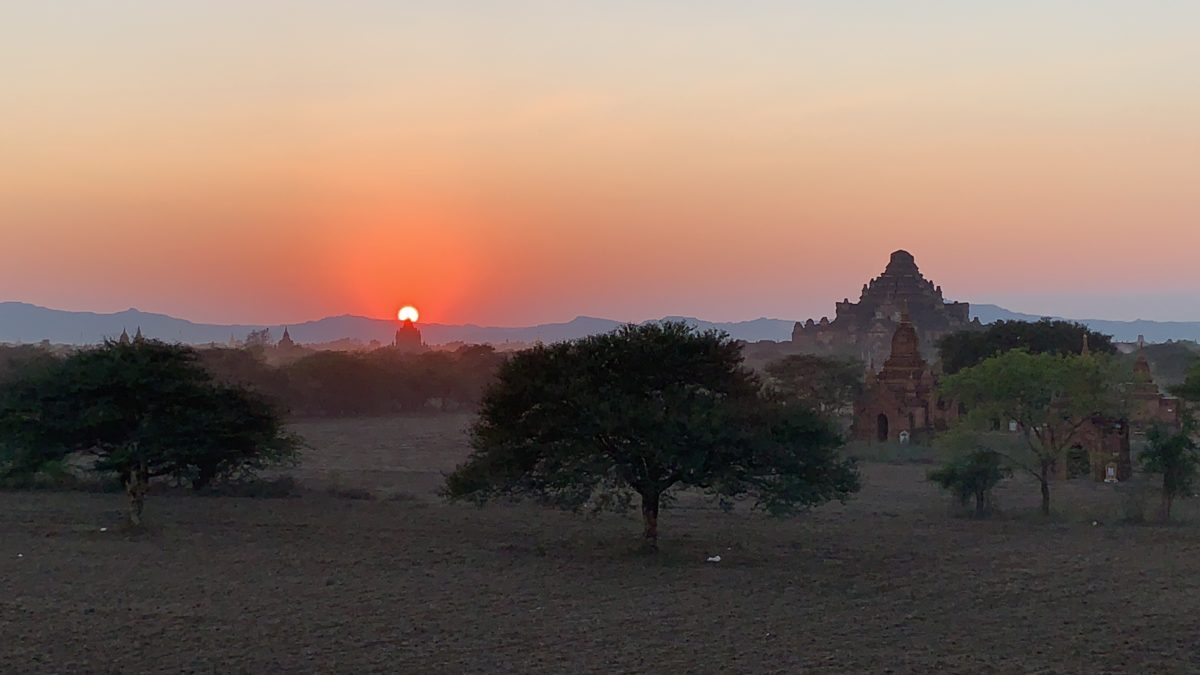
The sunsets in Myanmar were legendary, especially in Bagan.
Once the sun had dropped, so did the temperature and a fog began to roll in.
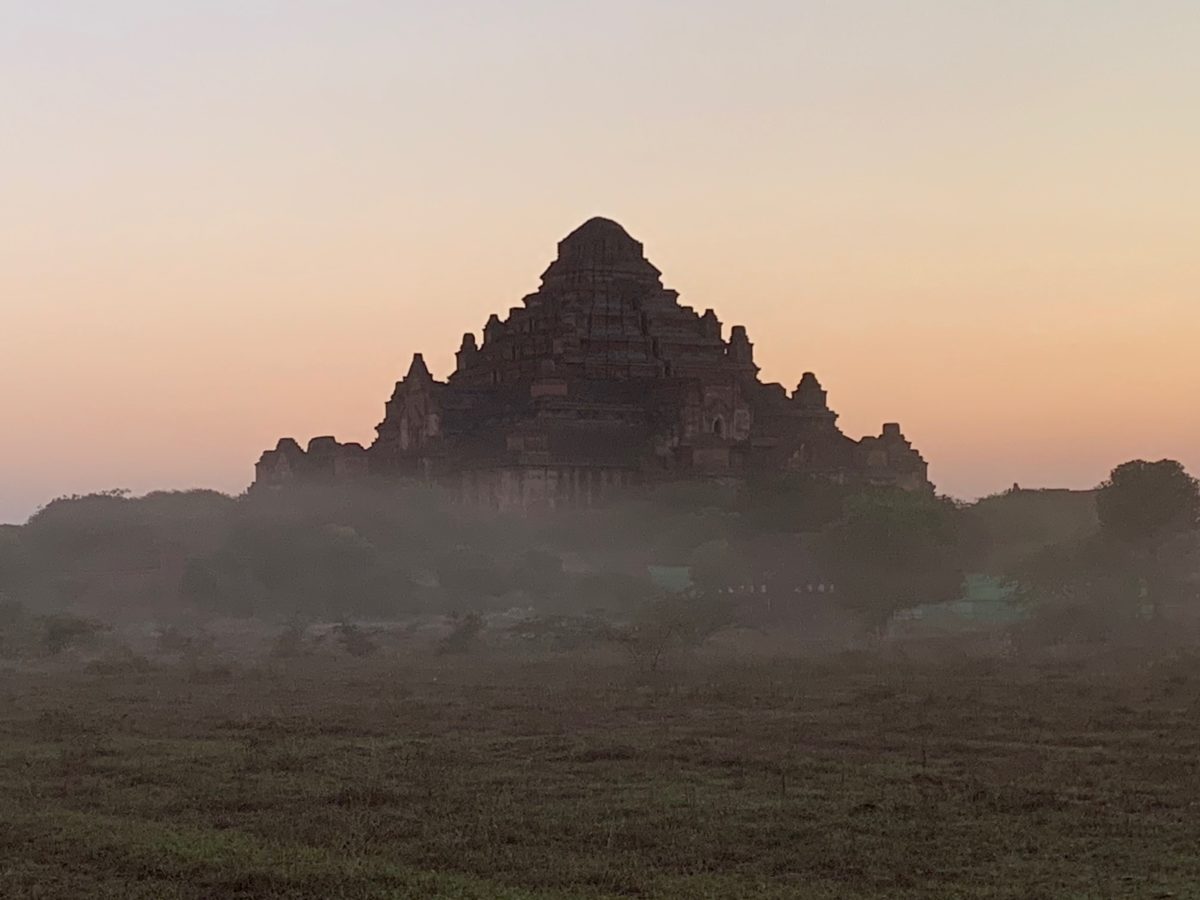
Dhammayangyi after sunset as the fog rolled in
We parted ways with our new friend and headed back to the hotel for a nightcap.
We planned on an early night because we had to be up at 4:30 am for our next adventure, “day 2” in Bagan, which was to begin with a hot-air balloon ride.
Click Here For My Review Of Balloons Over Bagan
Cheers!

